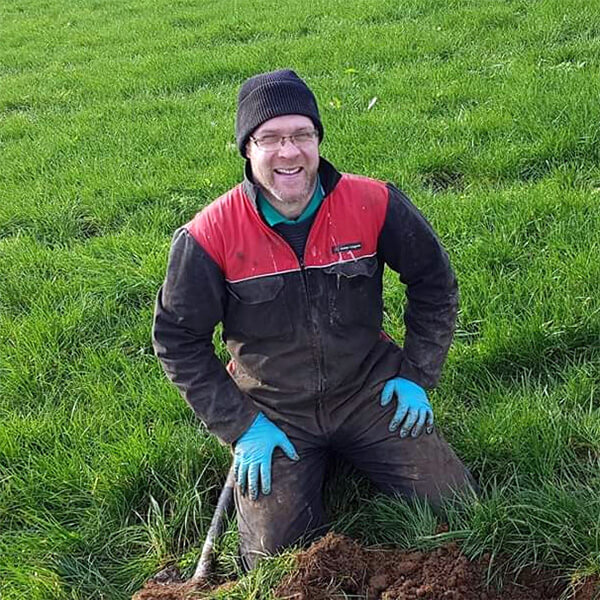May 28th:
We walked the farm on Tuesday to do a farm cover and we were relatively happy with what we measured and saw: Farm Cover (Kg DM/Ha): 804 Growth Rate (Kg DM/Ha): 58 L.U./Ha: 4.34 – 28 Ha closed for remainder of 1st cut getting knocked in next few days. 15 units/acre of foliar urea is being currently applied to grazing paddocks and walking the farm today grass has really moved on in the last two days. This is due to the inch of rain that fell late last week which was most welcome so we expect to see a big increase in growth rates on next week’s grass walk. Our “test” grazing paddock – no 7 seems to be running out of steam so we are going to top up most of it with some foliar urea but leave some without any nitrogen.
We cut and weighed quadrants on our “test” silage field today before it is knocked for silage and we are more than happy with the results. It has received a total of 36 units of nitrogen/acre versus 80 units in every other silage field – yield will be an impressive 14 tonnes/acre (6.65T DM/Ha).
15 units/acre of foliar urea is being currently applied to grazing paddocks and walking the farm today grass has really moved on in the last two days. This is due to the inch of rain that fell late last week which was most welcome so we expect to see a big increase in growth rates on next week’s grass walk. Our “test” grazing paddock – no 7 seems to be running out of steam so we are going to top up most of it with some foliar urea but leave some without any nitrogen.
We cut and weighed quadrants on our “test” silage field today before it is knocked for silage and we are more than happy with the results. It has received a total of 36 units of nitrogen/acre versus 80 units in every other silage field – yield will be an impressive 14 tonnes/acre (6.65T DM/Ha).
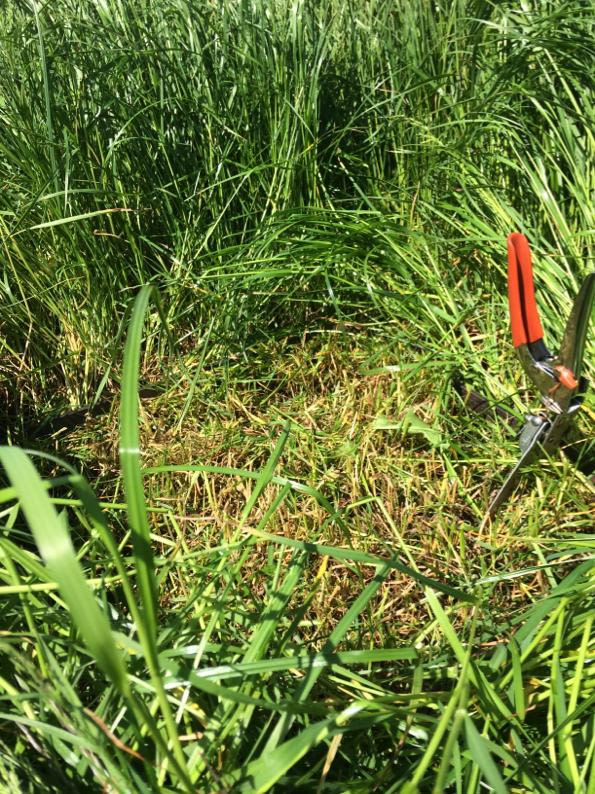
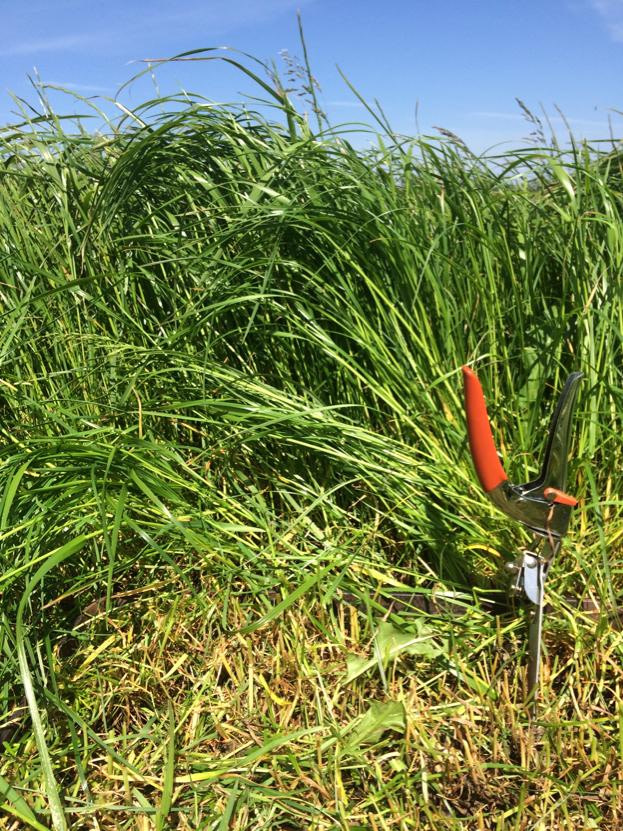 This replicates what we achieved in previous years and we are going to try this same approach for other fields for 2nd cut silage. I think this is a game changer for helping us reduce our nitrogen input across the whole farm – for grazing and now silage production.
This replicates what we achieved in previous years and we are going to try this same approach for other fields for 2nd cut silage. I think this is a game changer for helping us reduce our nitrogen input across the whole farm – for grazing and now silage production.
Phosphorus Deficiency (PICA):
As I relayed in the first bog post, our cows showed extreme signs of phosphorus deficiency back in 2015/2016 and we took the standard advice of increasing the use of P fertiliser to counteract it along with supplementing cows with extra phosphorus. We were advised to apply 1 bag/acre of 16% Superphos in Autumn of 2015 across all the ground which we did and soil tests were taken in January 2016 to assess the improvement. We were surprised to see that the levels had not changed one bit. The table below shows the average P level and range across our farm in January 2016 and again in January 2019.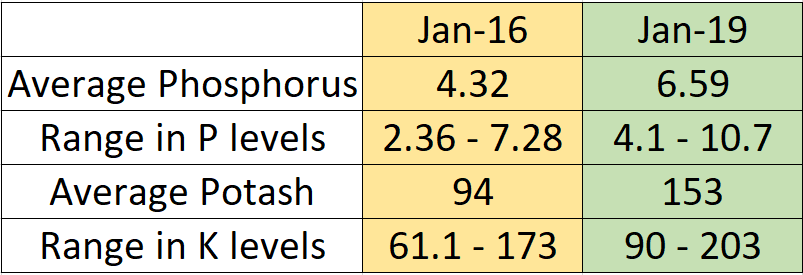 After exhausting all normal options to tackle our PICA problem we took a different approach and implemented a biological program in early 2017. From January 2017 to January 2019 our P levels increased about 50% despite applying little to no P fertiliser in those intervening 2 years. We had discovered through comprehensive soil tests that we had close to 900 ppm of phosphorus locked up (or in reserves) in our soils as have most Irish farmers. So we put a soil biology plan in place which included applying a biological inoculant to the soil to release some of the phosphorus reserves and as a result we have significantly reduced the amount of P fertiliser purchased. The PICA in our cows disappeared as did a significant spend on P fertiliser and phosphorus supplements for the cows.
After exhausting all normal options to tackle our PICA problem we took a different approach and implemented a biological program in early 2017. From January 2017 to January 2019 our P levels increased about 50% despite applying little to no P fertiliser in those intervening 2 years. We had discovered through comprehensive soil tests that we had close to 900 ppm of phosphorus locked up (or in reserves) in our soils as have most Irish farmers. So we put a soil biology plan in place which included applying a biological inoculant to the soil to release some of the phosphorus reserves and as a result we have significantly reduced the amount of P fertiliser purchased. The PICA in our cows disappeared as did a significant spend on P fertiliser and phosphorus supplements for the cows.
Next Week: Grass update and the value of slurry on our farm and how we maximise it!
Hi there. My name is Thomas Griffin and I farm here with my family in Timoleague in West Cork. We currently milk 200 high EBI spring calving Friesian cows in a grass based system with an effective SR of 2.55 LU/Ha. We measure grass weekly and all data is inputted into Pasture Base Ireland. Last year we averaged 14 T DM/Ha with 525 Kg MS/cow sold. We have 2 labour units and all heifers are contract reared off-farm.
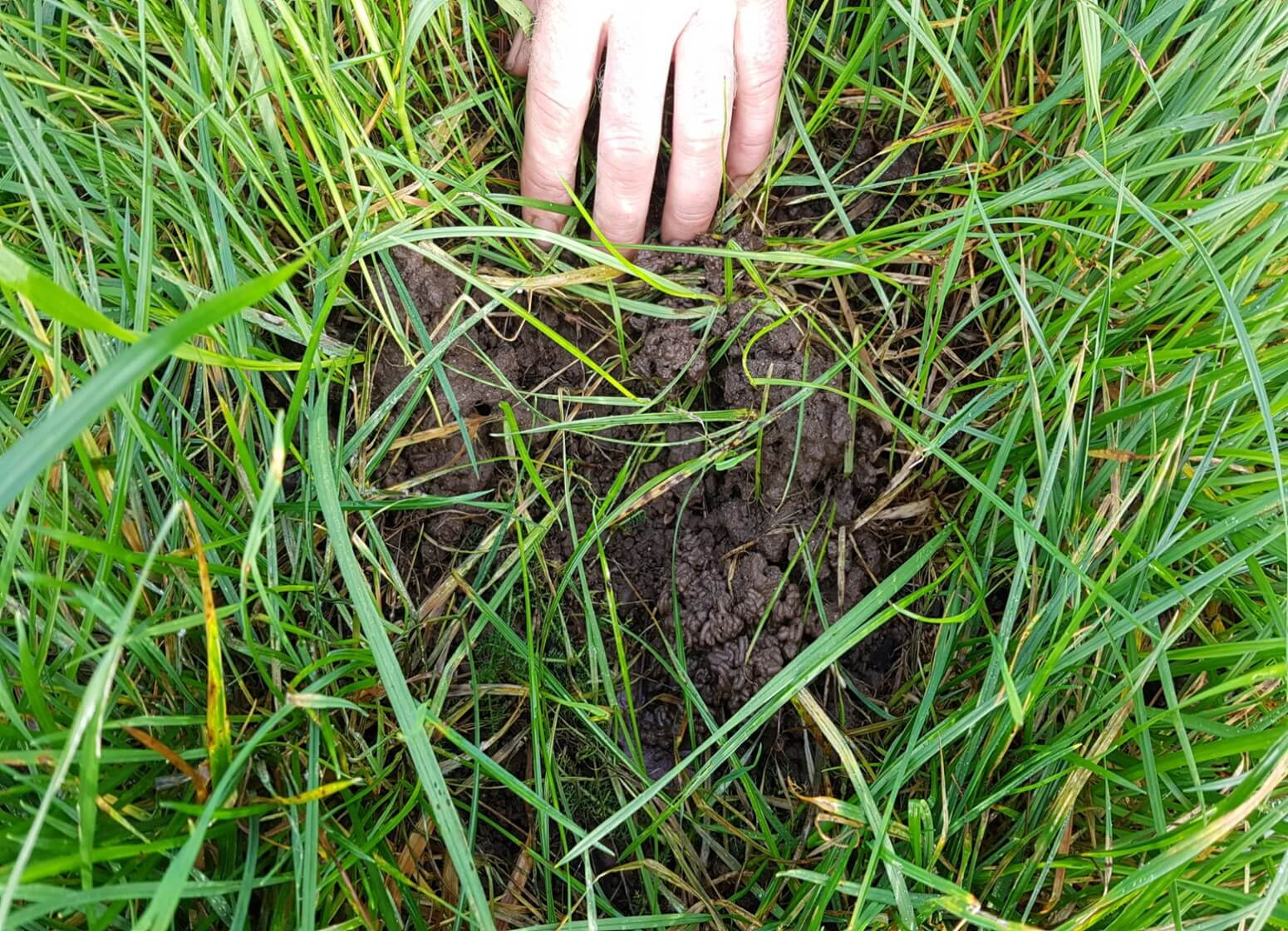
Background:
In 2015/2016 we had quite a significant problem with phosphorus deficiency in our cows. During the grazing season cows were ravenous for odd stuff like stones, plastic pipes and the seat off the quad!! We were supplementing with phosphorus and increased the amount of phosphorus fertiliser applied as per our local advisers. We expected to see our P levels and soil indexes increase but they didn’t. They were the same or dropped and the symptoms of deficiency in the cows continued unless they were supplemented full time. It bugged me why increasing our use of phosphorus fertiliser would not increase our soil P index and I began to look for answers. In the summer of 2016 I saw an editorial in the Irish Farmers Journal on a new machine called the Tow And Fert from New Zealand. It was being imported by Leslie Dwyer for applying liquid urea to grass to reduce the levels of nitrogen used on farm. I contacted Leslie and asked him to carry out a few demos on the farm on different paddocks over a few occasions and we were relatively happy with what we saw and bought the 1200 litre dual boom model. In order to fully assess the potential of our soils and identify major deficiencies, Leslie advised us to have comprehensive soil tests taken which we did in January 2017. To my astonishment, the soil tests revealed that we had 1500 Kg/Ha (750 ppm) of phosphorus “locked up” in our soils but available levels were still too low. We put a biological program in place to release some of these locked up reserves and thankfully since that year our cows have not showed any signs of a phosphorus deficiency and we have been able to stop extra phosphorus supplementation. In the past 2 years we have applied very little phosphorus fertiliser to grazing ground and recent soil tests show our indexes have increased significantly. This is as a result of implementing a biological fertiliser plan to improve soil biology, increase earthworm numbers and thereby release reserves of locked up nutrients.YTD 2019:
Our target this year is to grow 14 t DM/Ha with a maximum of 175 Kg N/Ha (140 units N/acre). All grazing and silage fields received a granular application of 11 units of nitrogen with sulphur in late January and have also been treated with a soil biology enhancer and nitrogen fixing inoculant. All silage ground has received slurry (trailing shoe) at 2,500 gallons/acre. We have used Slurrycal since 2015 to ensure slurry is biologically treated and that combined with the trailing shoe is giving a fantastic response in growth. We optimise the use of slurry and see it as an extremely important nutrient source and biological feed for soil. Paddocks with the lowest covers received an application of slurry (trailing shoe) when condition allowed in January/February. After each grazing we apply 15 units/acre of nitrogen (all liquid urea through the Tow and Fert) when grass covers hit 500- 700 Kg DM/Ha. This is to ensure that the liquid urea mix is taken up through the leaf and as little as possible through the soil. We are currently half way into the 3rd rotation and have used 41 units of nitrogen/acre maximum on paddocks. Paddocks that received slurry have had a total of 26 units N/acre and we are skipping odd paddocks with nitrogen to see what growth response we are getting from the nitrogen fixing products.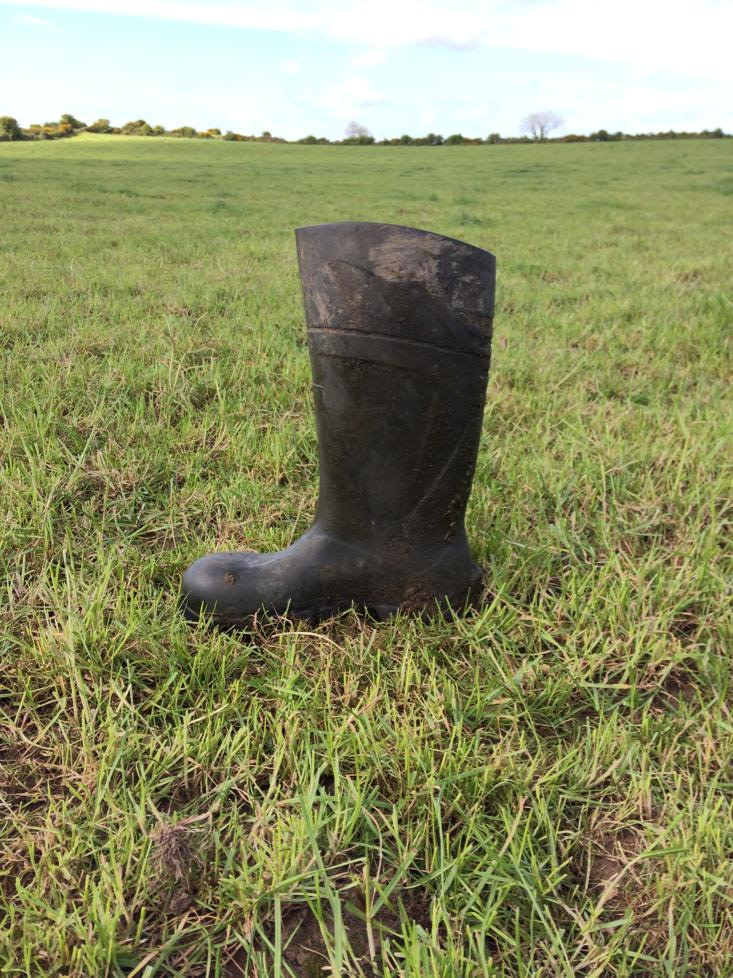
May 13th:
Cutting 25 acres of top quality silage (earmarked for milking cows this Autumn or next spring). This ground received slurry and 3 bags/acre of Dairy Select (23-2.5-10-4S). We are tedding it out to get it close to 30% DM and an additive supplied by our local co-op will be applied. All 2nd cut silage ground will then get slurry at 2,500 gals/acre We have a 2.5 acre silage field that we use as a test field to see how we can reduce the level of nitrogen needed for silage production. To date this has received 11 units of granular nitrogen with sulphur and 25 units of liquid urea – a total of 36 units of chemical nitrogen. I am very happy with the grass production so far and will let you know how this little trial turns out.May 21st:
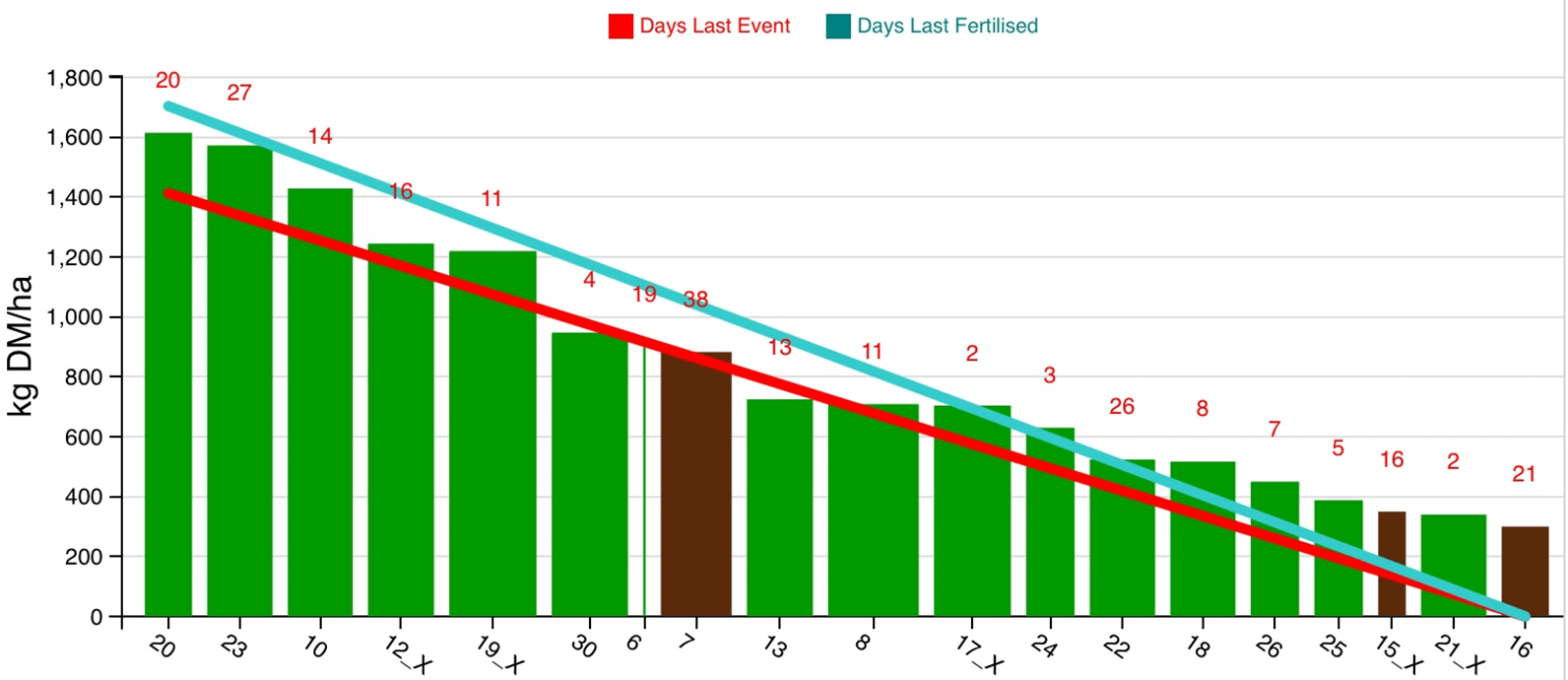
June 24th 2021:
Like most farmers this year we were glad to get the remainder of our 1st cut in the pit on June 5th. It bulked extremely well and we are more than happy with the tonnages achieved on 30 units of N/Ha plus slurry. Slurry has been applied on ground for 2nd cut and a small rate of foliar nitrogen has also been applied – 30 units again. I am still amazed at how far we can stretch the fertiliser we buy – we are well on target to achieve our goals of 100 units N/acre total for this year and still grow sufficient quantities of grass and silage.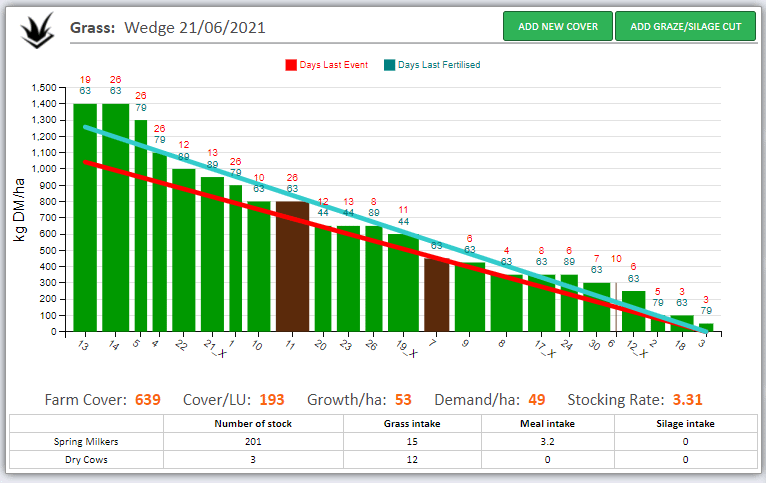 We are increasingly finding that the restricting factors for grass growth here is sunshine and rain as our biological regime continues to reduce our dependency on fertiliser to drive grass growth.
Soil Samples:
A total of 18 soil samples were taken this year – PK/pH soil samples which will help us identify paddocks that needs lime and ensure the pH remain as close to optimum as possible. pH levels had dropped more than expected and varied from 6.5 to 5.3 in a paddocks we use for calf grazing. K levels varied from 123 to 333 ppm while P levels varied from 3.4 to 11 ppm. What is very noticeable from the results is that phosphorus levels tended to be much lower in low pH fields than optimum pH fields. This again highlights the importance of keeping pH correct to help soil biology release the phosphorus that is locked up in the soil – this is cheaper and more sustainable than buying expensive bagged P year in, year out. We have limed a big percentage of paddocks with 2T of Grolime/acre over the past few months and will keep this going until all paddocks receive what is needed. This has also shown us that we need to increase our fungal activity levels on the farm which tend to hold calcium levels in soils, within reason!
FuturAg carried out some soil biology tests here back in April. They use the Soil Microbiometer from the US ( www. microbiometer.com) which is a patented device that can be used on farm to test soil. The results from 2 tests show that the soil biology levels here are excellent but with room to improve the fungal levels. In an ideal soil for grass and cereal production there would be the same amount of bacterial and fungal biomass. Most Irish soils are bacteria dominant which limits the ability of soil to structure itself, sequester carbon (fungi store 4x more carbon in their biomass than bacteria), access locked up minerals and break down hard to digest residues like FYM/chopped straw/cereal/maize stubbles into humus for long term storage in the soil. Ideally the tests would show a F:B test of 1:1.
We are increasingly finding that the restricting factors for grass growth here is sunshine and rain as our biological regime continues to reduce our dependency on fertiliser to drive grass growth.
Soil Samples:
A total of 18 soil samples were taken this year – PK/pH soil samples which will help us identify paddocks that needs lime and ensure the pH remain as close to optimum as possible. pH levels had dropped more than expected and varied from 6.5 to 5.3 in a paddocks we use for calf grazing. K levels varied from 123 to 333 ppm while P levels varied from 3.4 to 11 ppm. What is very noticeable from the results is that phosphorus levels tended to be much lower in low pH fields than optimum pH fields. This again highlights the importance of keeping pH correct to help soil biology release the phosphorus that is locked up in the soil – this is cheaper and more sustainable than buying expensive bagged P year in, year out. We have limed a big percentage of paddocks with 2T of Grolime/acre over the past few months and will keep this going until all paddocks receive what is needed. This has also shown us that we need to increase our fungal activity levels on the farm which tend to hold calcium levels in soils, within reason!
FuturAg carried out some soil biology tests here back in April. They use the Soil Microbiometer from the US ( www. microbiometer.com) which is a patented device that can be used on farm to test soil. The results from 2 tests show that the soil biology levels here are excellent but with room to improve the fungal levels. In an ideal soil for grass and cereal production there would be the same amount of bacterial and fungal biomass. Most Irish soils are bacteria dominant which limits the ability of soil to structure itself, sequester carbon (fungi store 4x more carbon in their biomass than bacteria), access locked up minerals and break down hard to digest residues like FYM/chopped straw/cereal/maize stubbles into humus for long term storage in the soil. Ideally the tests would show a F:B test of 1:1.
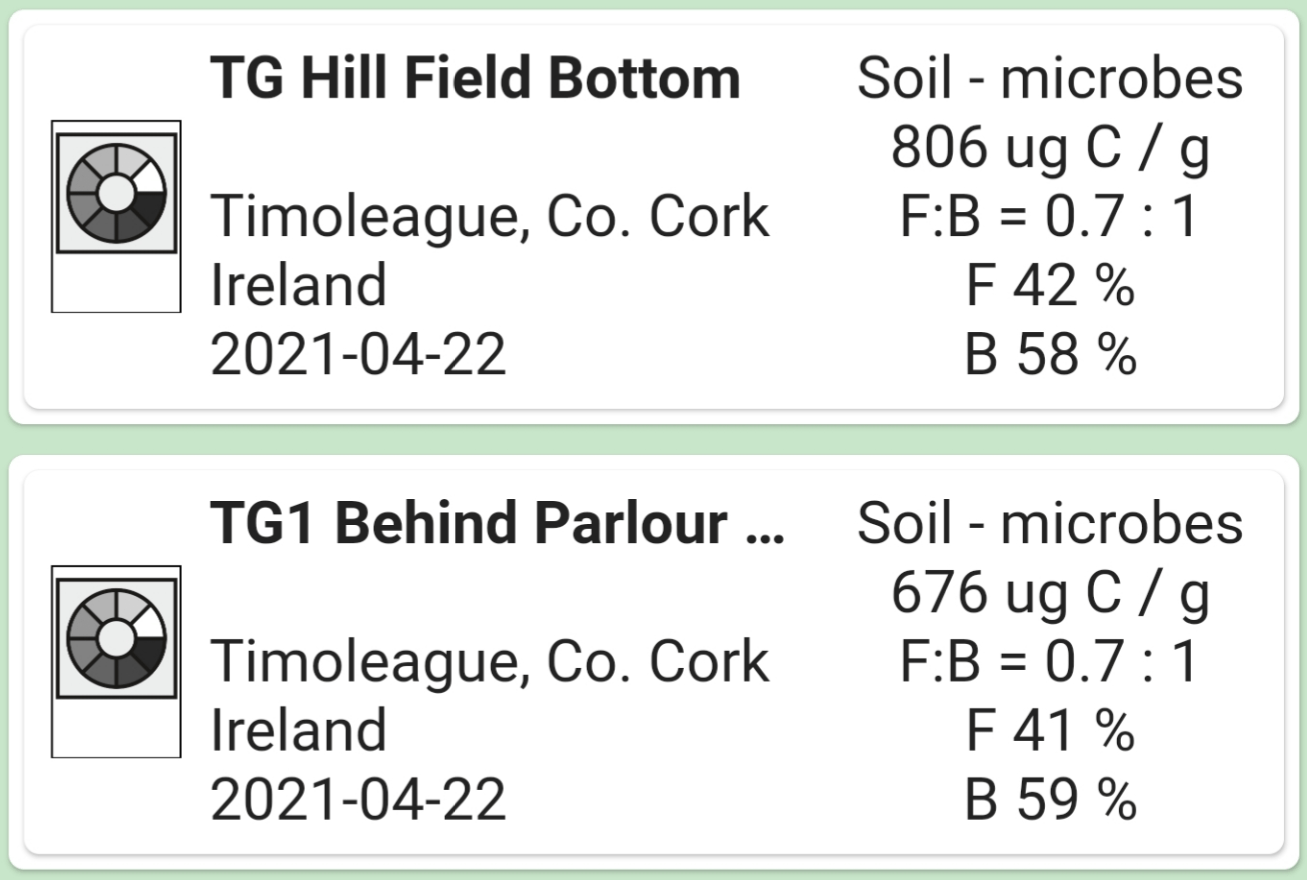 The table below shows the ranges for soils and other media that can be tested for biological activity.
The table below shows the ranges for soils and other media that can be tested for biological activity. 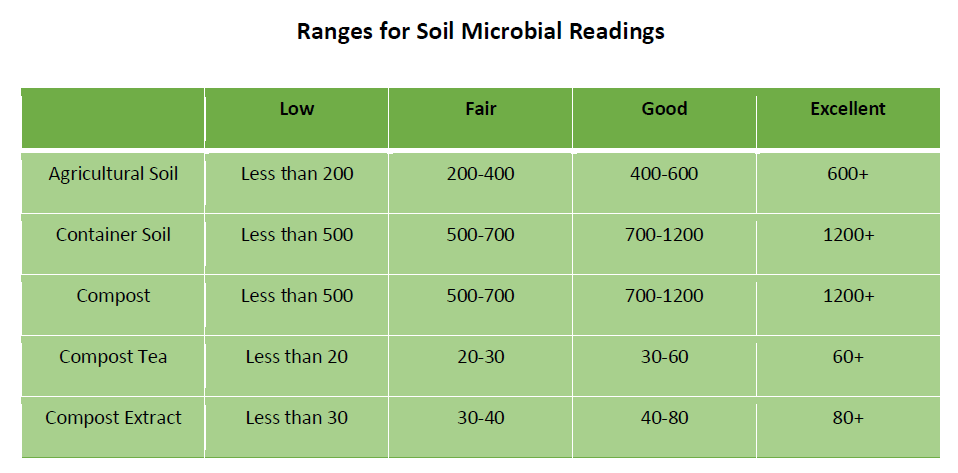
Next time: MSS swards and brewing N-fixing bacteria.
May 31st 2021:
2021 – such an unpredictable year! It has been tough growth wise but it has shown us that the biological approach we are taking here on our farm is very resilient – even in a cold year like this! I am feeling very happy with the results and know that Biological Farming is here to stay for us. The farming system we are building here now has biology at its core. The way the farm is responding to low amounts of nitrogen is remarkable and it is like the soil is telling us to get out of our way and let us do our work. A bit of Summer finally arrived last week (May 26th) and allowed us to snatch some high quality 1st cut. The first part of silage cut is relatively high-quality silage earmarked for late and early lactation cows and the remainder will be for dry cows. All home silage ground received 2,500 gallons/acre of slurry in February and got a grazing. A second application of slurry was applied in late March/Early April followed with 30 units/acre of foliar nitrogen. When we add up the chemical N and ammonium N from slurry applied it comes out at a total of 80 units/acre. This is more than sufficient to grow good crops of silage for us and the volume harvested last week showed that. The remainder of the silage will be cut when the weather allows but the bulk of grass in those fields is remarkable considering the year and the low level of chemical N used. Despite the low levels of bagged nitrogen used, silage fields have greened up considerably since cutting – there is no N deficit building up! The slurry applied (we mixed parlour washings into the tanks as we find it grows more grass when diluted) was tested and shows the power it has even when watered down considerably: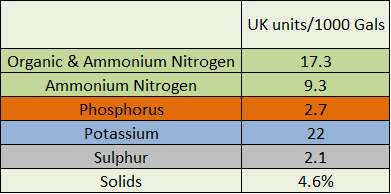 The 9.3 units of ammonium nitrogen is part of the 17.3 units of total Nitrogen. Not all of these nutrients are available for growth (50 % of the P and 90% of the K are) but neither are all the nutrients in a bag of fertiliser. One valuable lesson learned this Spring is the use of slurry. The response we saw on our paddocks to early slurry application reinforced for us the power that slurry has and we will try and make sure (weather depending) that all ground gets at least one application of slurry early Spring for the future. Growth here this Spring was on par with other farms with no fertiliser spread on grazing paddocks until March 24th and that was a maximum of 23 units/acre.
The 9.3 units of ammonium nitrogen is part of the 17.3 units of total Nitrogen. Not all of these nutrients are available for growth (50 % of the P and 90% of the K are) but neither are all the nutrients in a bag of fertiliser. One valuable lesson learned this Spring is the use of slurry. The response we saw on our paddocks to early slurry application reinforced for us the power that slurry has and we will try and make sure (weather depending) that all ground gets at least one application of slurry early Spring for the future. Growth here this Spring was on par with other farms with no fertiliser spread on grazing paddocks until March 24th and that was a maximum of 23 units/acre.
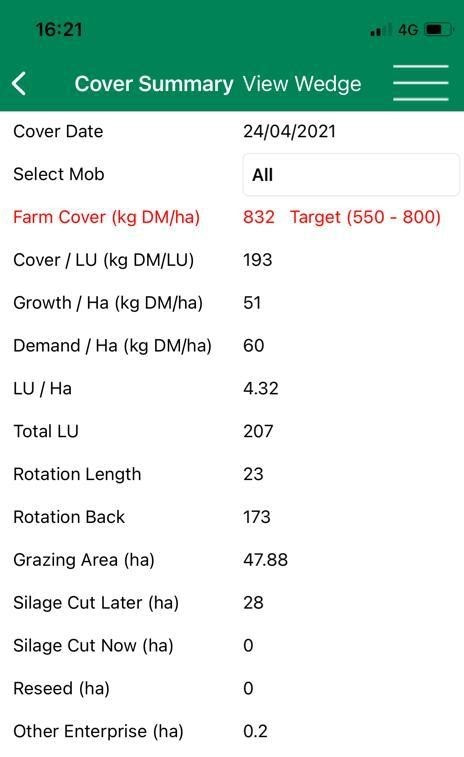 In March/April when grass growth was slow, we buffer fed cows with maize silage, ensiled fodder beet and dairy pellets from Barryroe co-op. Cows are currently averaging 2 – 2.1 Kg MS but the wet weather is unsettling them. Cow health is good but repeats are slightly higher than last year – all weather related. We are pre-mowing some paddocks at the moment.
In March/April when grass growth was slow, we buffer fed cows with maize silage, ensiled fodder beet and dairy pellets from Barryroe co-op. Cows are currently averaging 2 – 2.1 Kg MS but the wet weather is unsettling them. Cow health is good but repeats are slightly higher than last year – all weather related. We are pre-mowing some paddocks at the moment.
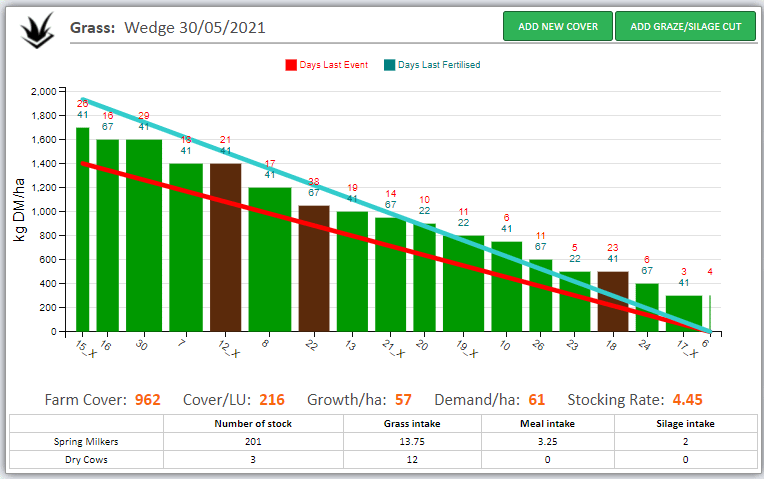 The farm is looking a picture this week and growth has picked up nicely after the recent deluges of rain. We started the 4th round 10 days ago and that first paddock had only received slurry plus 42 units of foliar N so far. Some of the other paddocks on this round will have only received 42 units/acre of N to date.
We are currently applying a mix of foliar fertilisers to grazing paddocks after each rotation to give a rate applied of:
N – 15 units/acre
P – 0.25 units/acre
K- 1 unit/acre
S – 0.4 units/acre
We are mixing a small amount of a CCF fertiliser with CAN, P, K and S along with granular urea in the Tow and Fert. Experience internationally shows a much higher response to foliar applied P and K than granular and there is a brand of normal granular CCF fertiliser available from our co-op that dissolves easily in our Tow and Fert. Other farms this Spring saw benefits from applying small amounts of foliar P especially during the colder weather. Soil temperatures were low and P wasn’t being taken up by the grass plant – hence the purple colour on a lot of grass this Spring. With soil and air temperatures rising we will now use more of our “budget” of N and other nutrients to increase grass growth when the growth response to fertiliser is much higher.
Next time out: Soil test results; brewing Nitrogen Fixing Bacteria; Soil Biology Testing; Multi Species Swards
The farm is looking a picture this week and growth has picked up nicely after the recent deluges of rain. We started the 4th round 10 days ago and that first paddock had only received slurry plus 42 units of foliar N so far. Some of the other paddocks on this round will have only received 42 units/acre of N to date.
We are currently applying a mix of foliar fertilisers to grazing paddocks after each rotation to give a rate applied of:
N – 15 units/acre
P – 0.25 units/acre
K- 1 unit/acre
S – 0.4 units/acre
We are mixing a small amount of a CCF fertiliser with CAN, P, K and S along with granular urea in the Tow and Fert. Experience internationally shows a much higher response to foliar applied P and K than granular and there is a brand of normal granular CCF fertiliser available from our co-op that dissolves easily in our Tow and Fert. Other farms this Spring saw benefits from applying small amounts of foliar P especially during the colder weather. Soil temperatures were low and P wasn’t being taken up by the grass plant – hence the purple colour on a lot of grass this Spring. With soil and air temperatures rising we will now use more of our “budget” of N and other nutrients to increase grass growth when the growth response to fertiliser is much higher.
Next time out: Soil test results; brewing Nitrogen Fixing Bacteria; Soil Biology Testing; Multi Species Swards
October 27th 2020:
Farm Cover (Kg DM/Ha): 709 Growth Rate (Kg DM/Ha): 25 Growth here is ticking along nicely as are cows with milk yield averaging 1.6 Kg MS/cow/day. We took what opportunities we had to get parlour washings and slurry out before the deadline and you can see the response from it despite the high water content. This week we sold/culled the cows that scanned empty and that will make some room for in-calf heifers returning from the contract rearer next week. We will keep cows out as long as possible but have plenty of grass and maize silage there for the winter if the weather turns against up.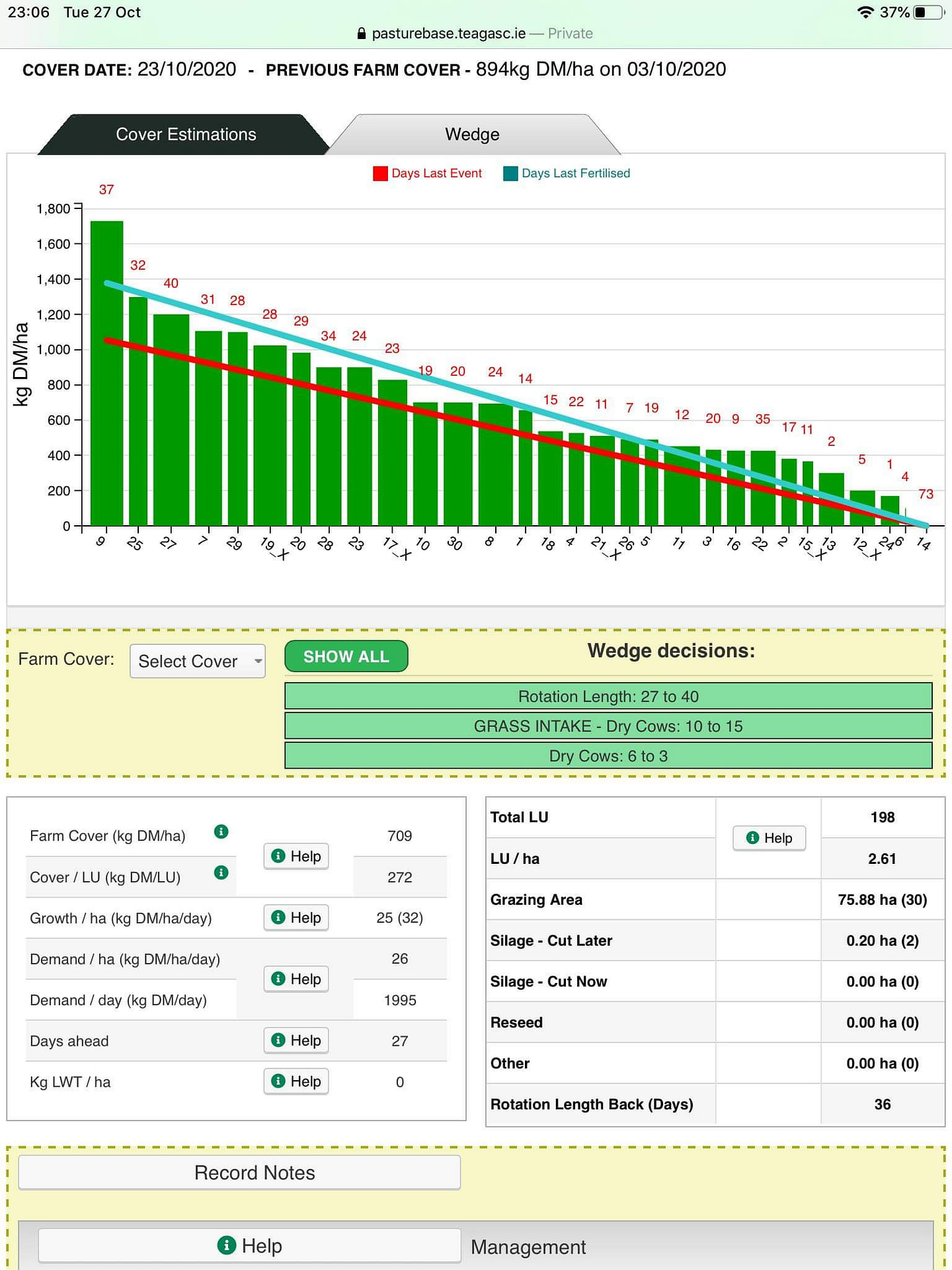
September 25th 2020:
This week was D-day in terms of assessing how much fertiliser and how much nitrogen specifically was used in total for the year. Calculations are made easier with all fertiliser purchased through our local co-op, Barryroe and do not include the 5.5 acres of maize silage. We set a target of 140 units/acre total for the grazing and silage ground at the start of the year and hit it exactly despite a few small hiccups. This represents a significant reduction of use from previous years and we are delighted with what we have achieved and the savings made. We have room for further improvement and will set a new target at the start of 2021.
Areas to save on further nitrogen inputs are on silage production where 36 units/acre of a combination of foliar and granular over the past few years proved to be as productive as 80 units of granular. We had two minor breakdowns with our Tow and Fert this year and Covid-19 impacted on getting spare parts quickly – we had to resort to using higher rates of granular in these cases but took the opportunity to apply protected urea with K to top up K levels on some paddocks.
We are also quite optimistic that the nitrogen fixing biological products we are currently trialling will allow us to reduce nitrogen fertiliser use further next year. This optimism is driven by the incredible improvements we have seen in our soil structure and soil health. I took out the shovel this week to dig some soil pits in fields and the pictures tell a thousand words – nice crumbly moist soil and an abundance of earthworms. Improved soil structure helps soil biology to do more of the work nature designed it to do – fix nitrogen from the air in the soil and the sky, release for grass the phosphorus, potassium and other nutrients locked up in the soil and store carbon in the soil in a form that is stable and will last for 100-1000 years.
This represents a significant reduction of use from previous years and we are delighted with what we have achieved and the savings made. We have room for further improvement and will set a new target at the start of 2021.
Areas to save on further nitrogen inputs are on silage production where 36 units/acre of a combination of foliar and granular over the past few years proved to be as productive as 80 units of granular. We had two minor breakdowns with our Tow and Fert this year and Covid-19 impacted on getting spare parts quickly – we had to resort to using higher rates of granular in these cases but took the opportunity to apply protected urea with K to top up K levels on some paddocks.
We are also quite optimistic that the nitrogen fixing biological products we are currently trialling will allow us to reduce nitrogen fertiliser use further next year. This optimism is driven by the incredible improvements we have seen in our soil structure and soil health. I took out the shovel this week to dig some soil pits in fields and the pictures tell a thousand words – nice crumbly moist soil and an abundance of earthworms. Improved soil structure helps soil biology to do more of the work nature designed it to do – fix nitrogen from the air in the soil and the sky, release for grass the phosphorus, potassium and other nutrients locked up in the soil and store carbon in the soil in a form that is stable and will last for 100-1000 years.
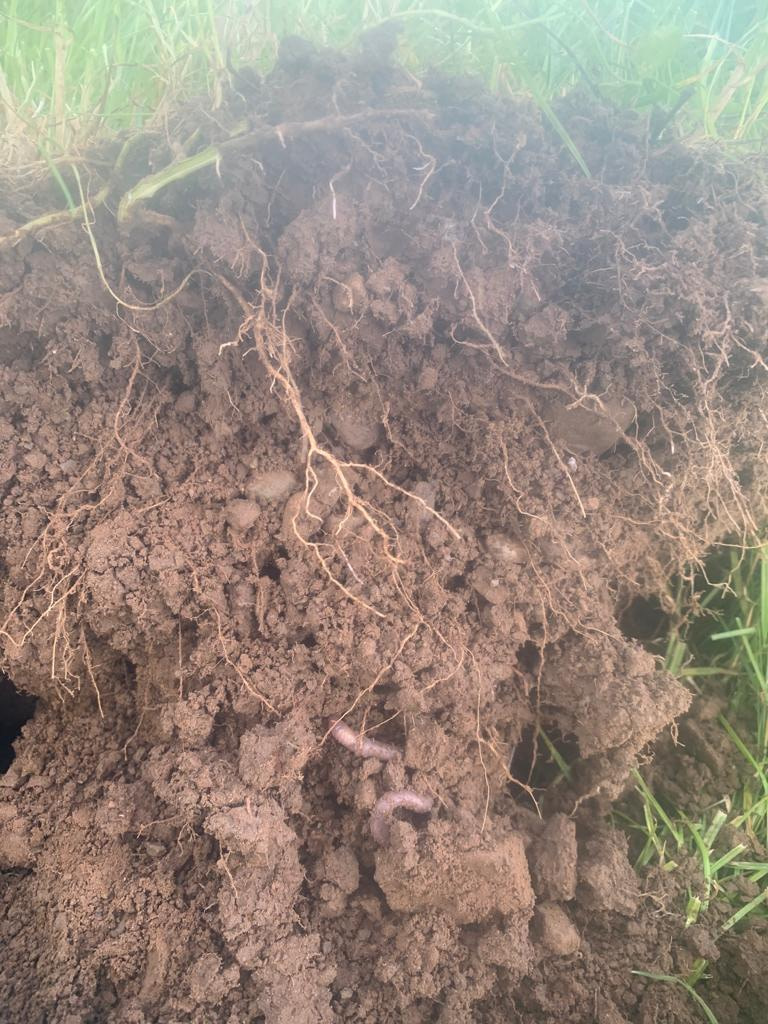
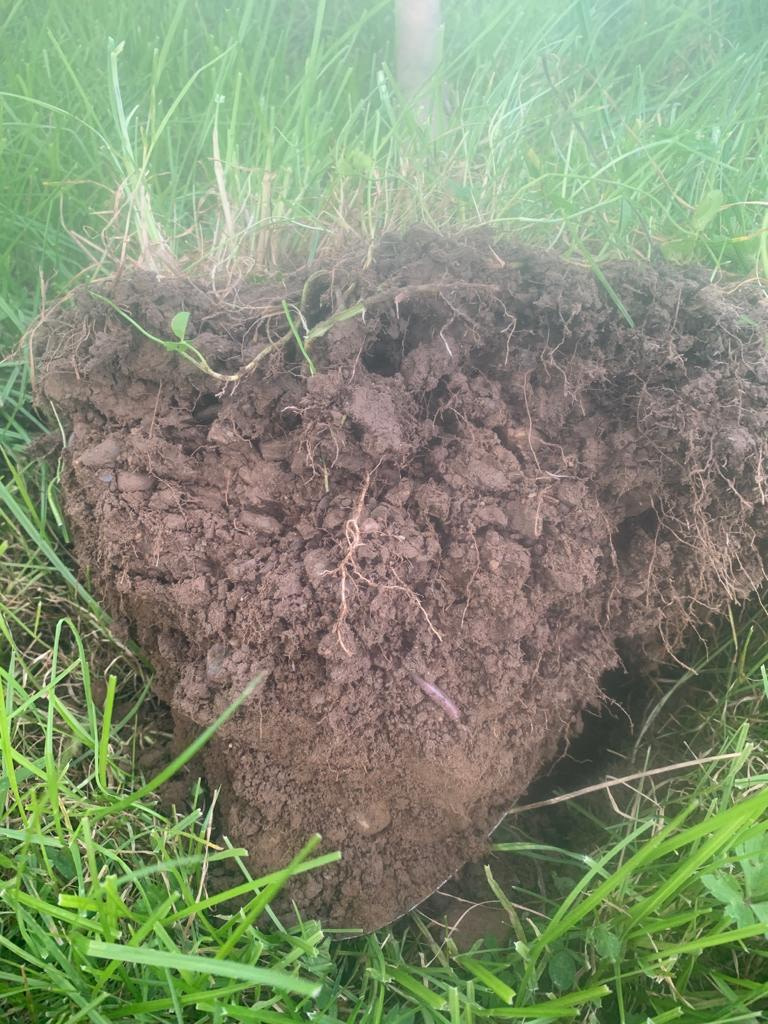
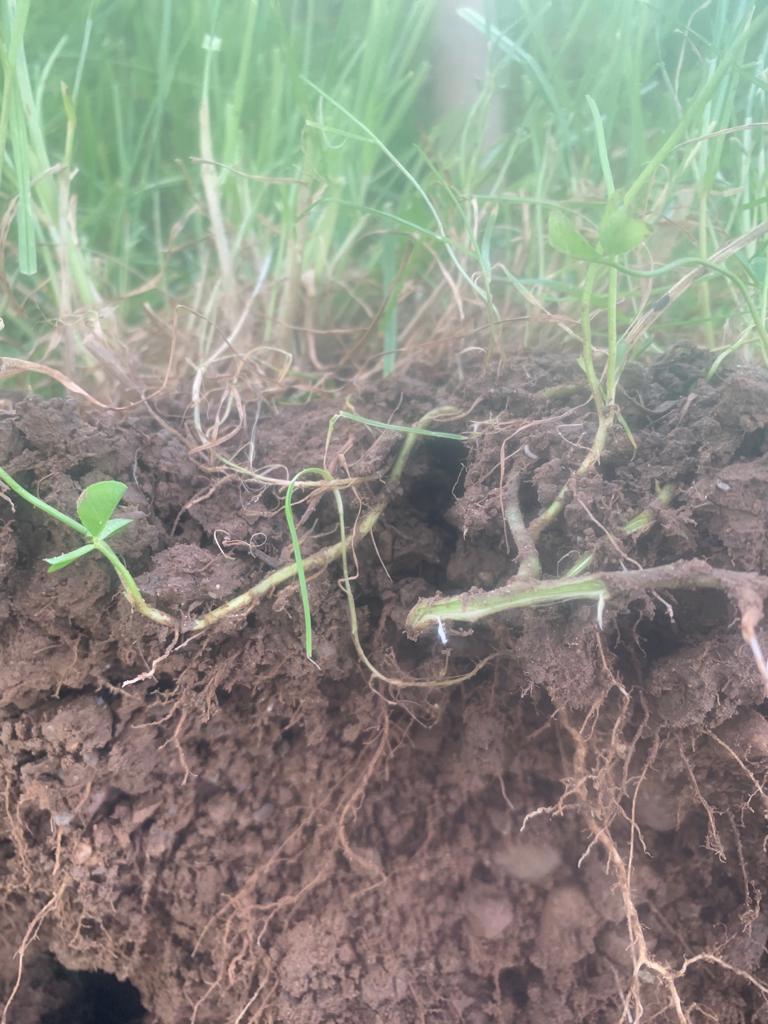
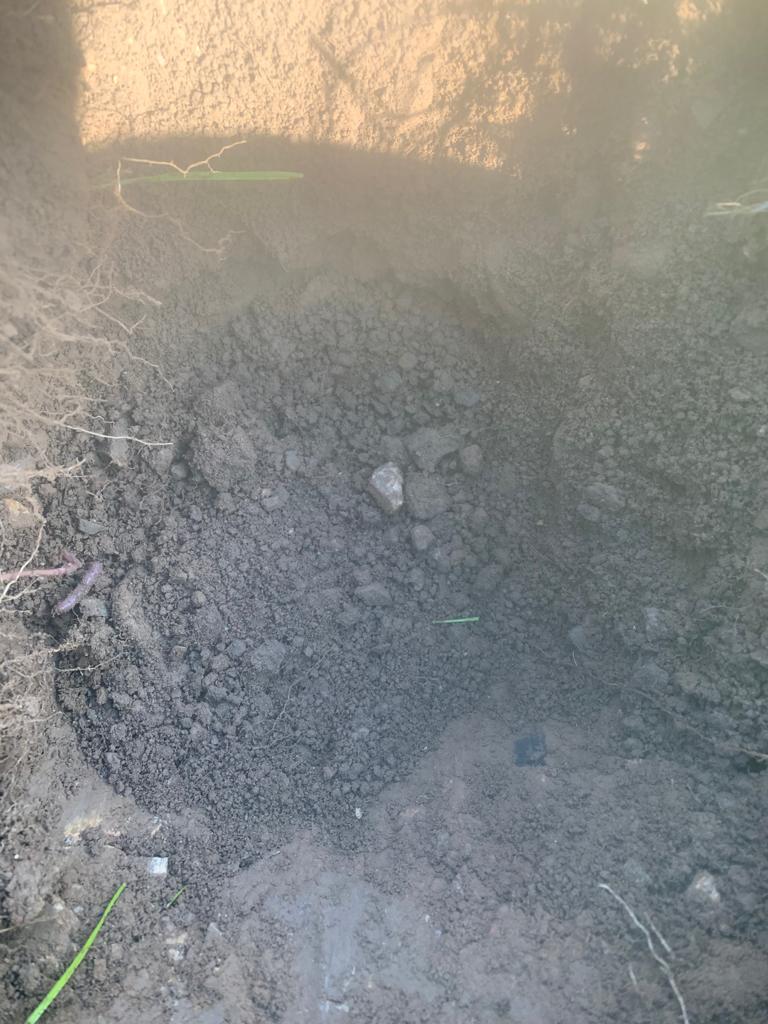
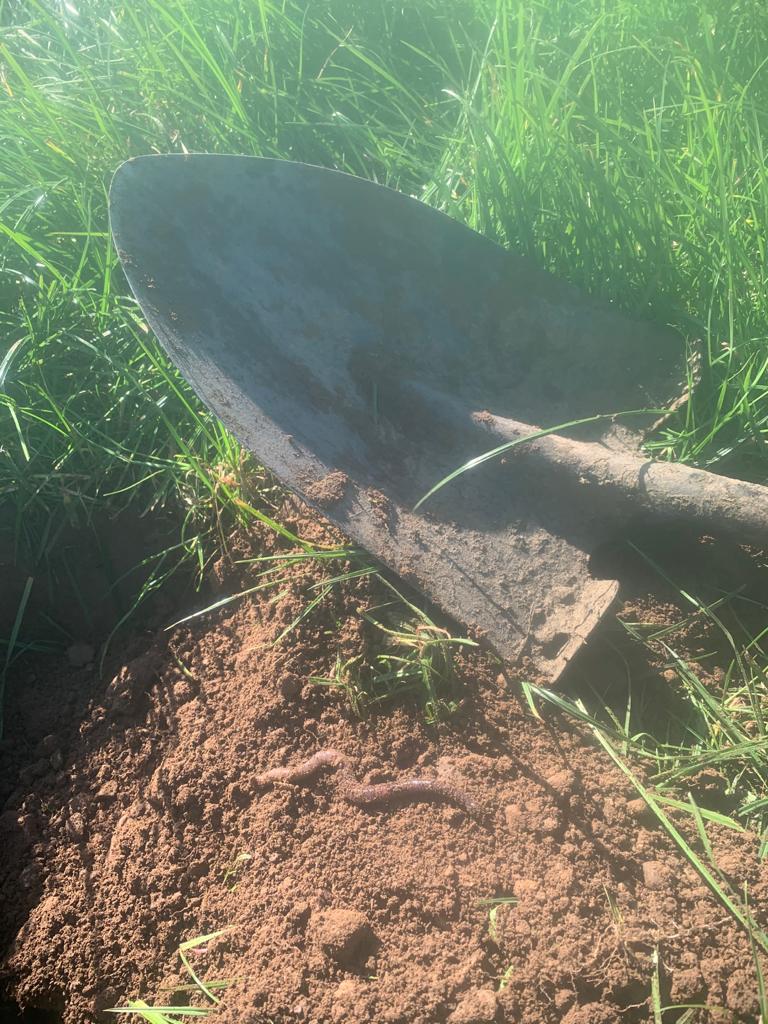
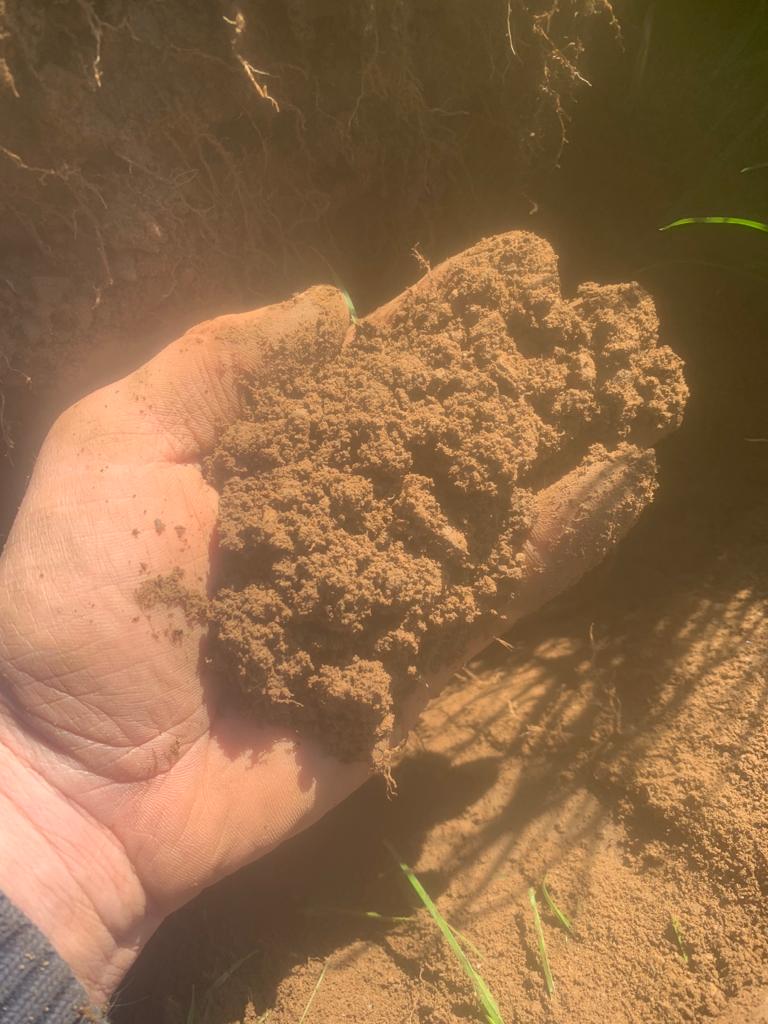

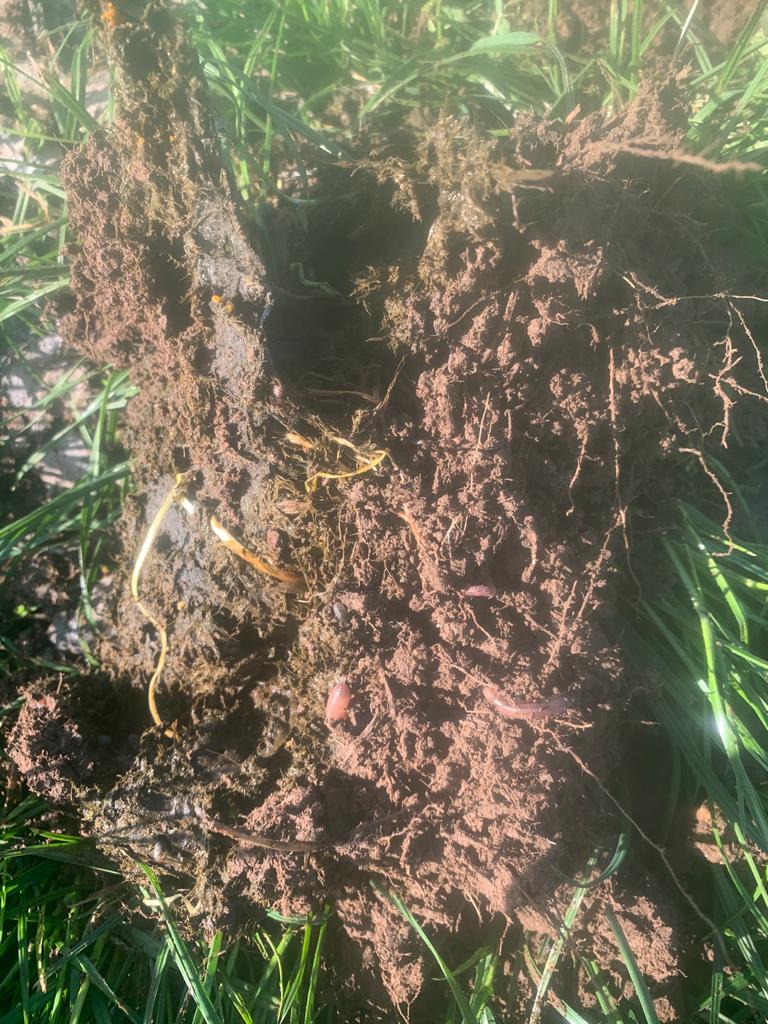
September 18th 2020:
Farm is really humming at the moment with this fine weather and grass is ticking along nicely. Cows are averaging 1.79 Kg MS/cow/day on 4 kg of dairy nuts and grazed grass. We put out our last load of foliar nitrogen on Monday and all that is left to go out now is one more load of the new biological test product we are assessing for FuturAg. With the fine weather soil is is dry enough to carry out some aeration after grazing and get some loads of dirty water out also.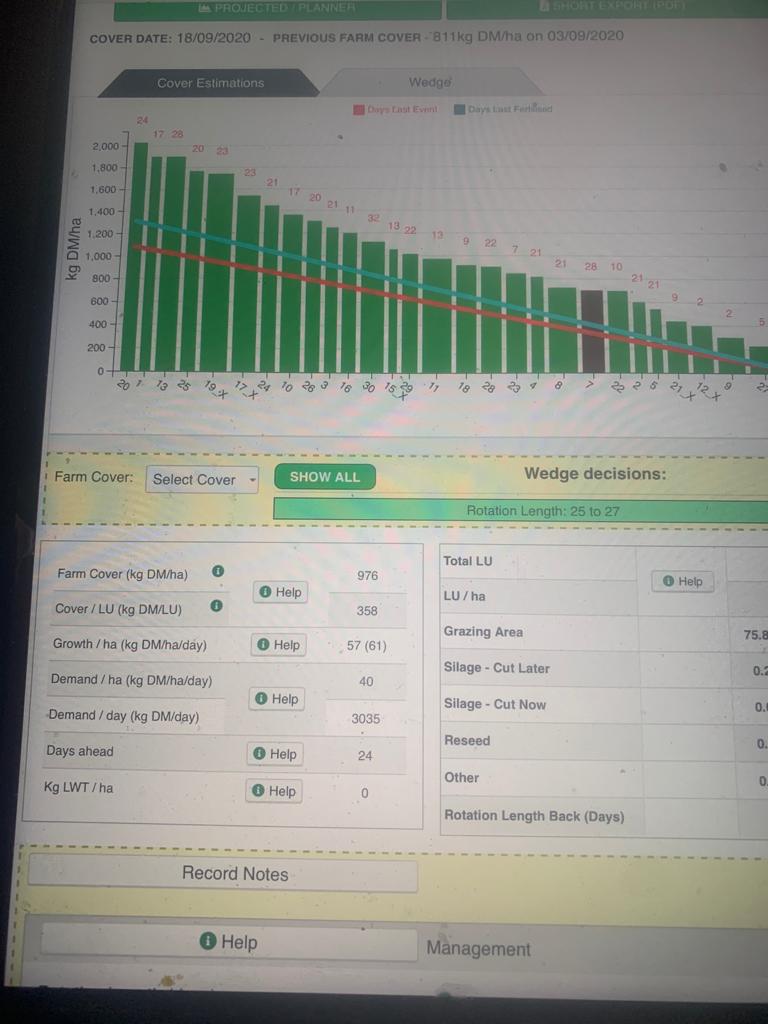 We are thrilled with growth rates to date and the way the farm has progressed with what we consider to be low rates of nitrogen. Next week we will be adding up the total amount of fertiliser used for the season and will give you full details on the next blog post.
We scanned last week and empty rate was 8% (up from 5% last year) which we were happy with as it was all A.I.
We are thrilled with growth rates to date and the way the farm has progressed with what we consider to be low rates of nitrogen. Next week we will be adding up the total amount of fertiliser used for the season and will give you full details on the next blog post.
We scanned last week and empty rate was 8% (up from 5% last year) which we were happy with as it was all A.I.
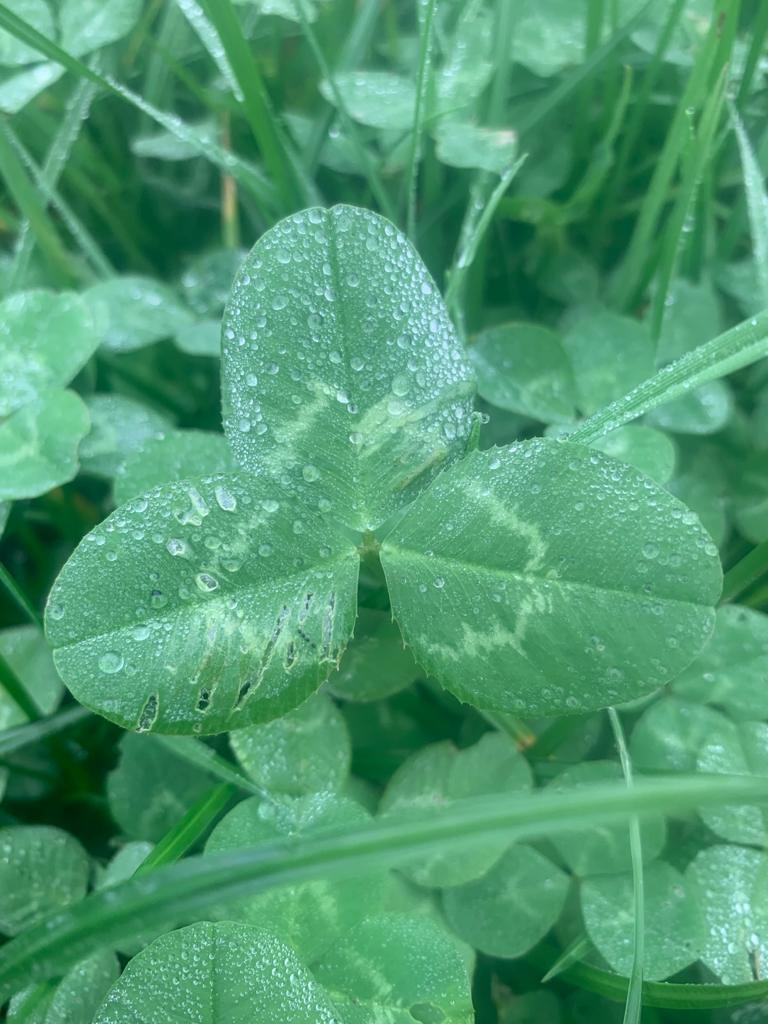
September 3rd 2020:
Cows are averaging 1.83 Kg MS/cow/day on 4 kg of dairy nuts and grazed grass only. We took 80 bales of silage off the milking platform the last Saturday in August and we are applying 10 units/acre of nitrogen with a carbon source currently. Farm Cover (Kg DM/Ha): 811 Growth Rate (Kg DM/Ha): 55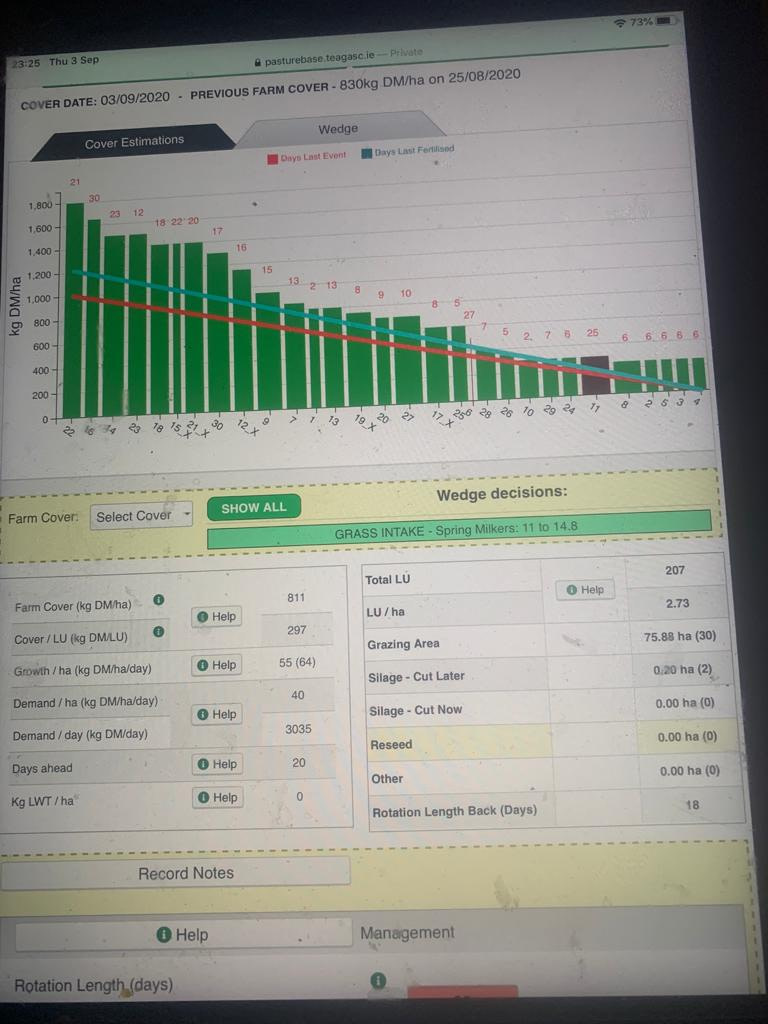 We are trialling a new biological product from FuturAg and have begun to apply it to all the grazing paddocks along with the last round of foliar nitrogen. This product is designed to supply nitrogen (similar to how clover works) to growing grass from the soil and air for the next 40 – 60 days. This is somewhat weather dependent and a relatively dry September and October will give the potential for greater success. It also contains other biological species to help with soil structure and release small amounts of other nutrients (such as P & K) locked up in the soil. It is designed to be applied every 60 days and if it works we hope it will allow us to further reduce our rates of nitrogen next year – I will keep you posted!!
We are trialling a new biological product from FuturAg and have begun to apply it to all the grazing paddocks along with the last round of foliar nitrogen. This product is designed to supply nitrogen (similar to how clover works) to growing grass from the soil and air for the next 40 – 60 days. This is somewhat weather dependent and a relatively dry September and October will give the potential for greater success. It also contains other biological species to help with soil structure and release small amounts of other nutrients (such as P & K) locked up in the soil. It is designed to be applied every 60 days and if it works we hope it will allow us to further reduce our rates of nitrogen next year – I will keep you posted!!
August 27th 2020:
Growth is absolutely flying here at the moment. We have been applying watery slurry to paddocks and the response in growth is amazing – if I had enough watery slurry every rotation we would need very little bag nitrogen to grow grass. The X factor in slurry is something that bag fertiliser just will never achieve! August 26th Figures: Farm Cover (Kg DM/Ha): 830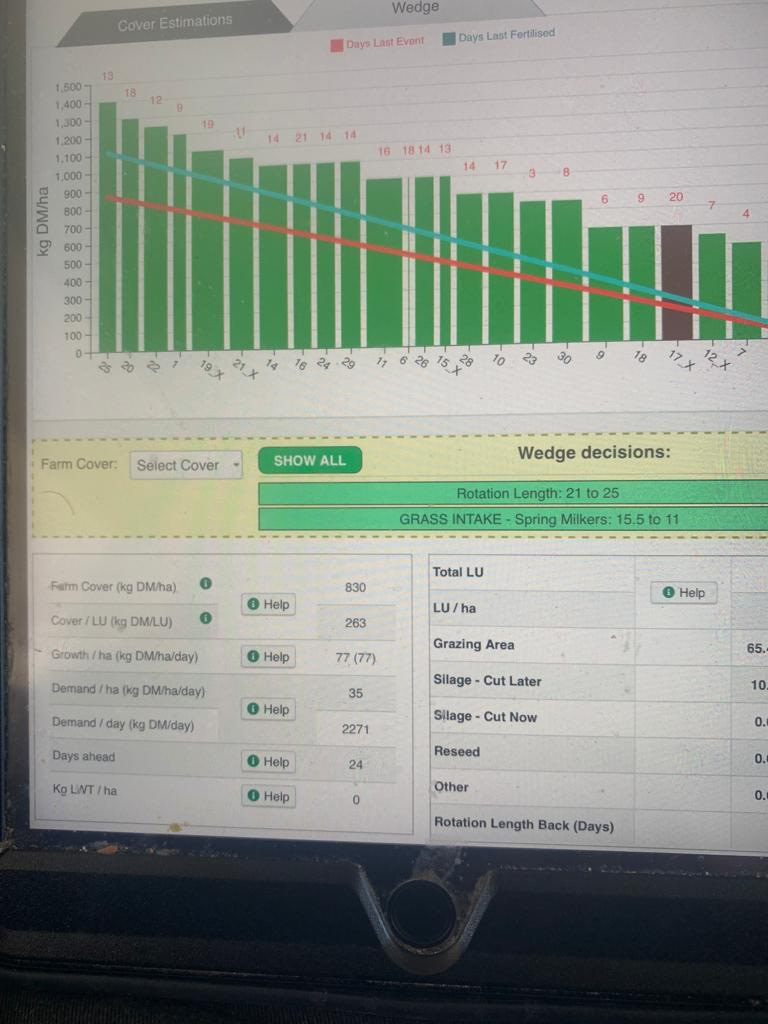
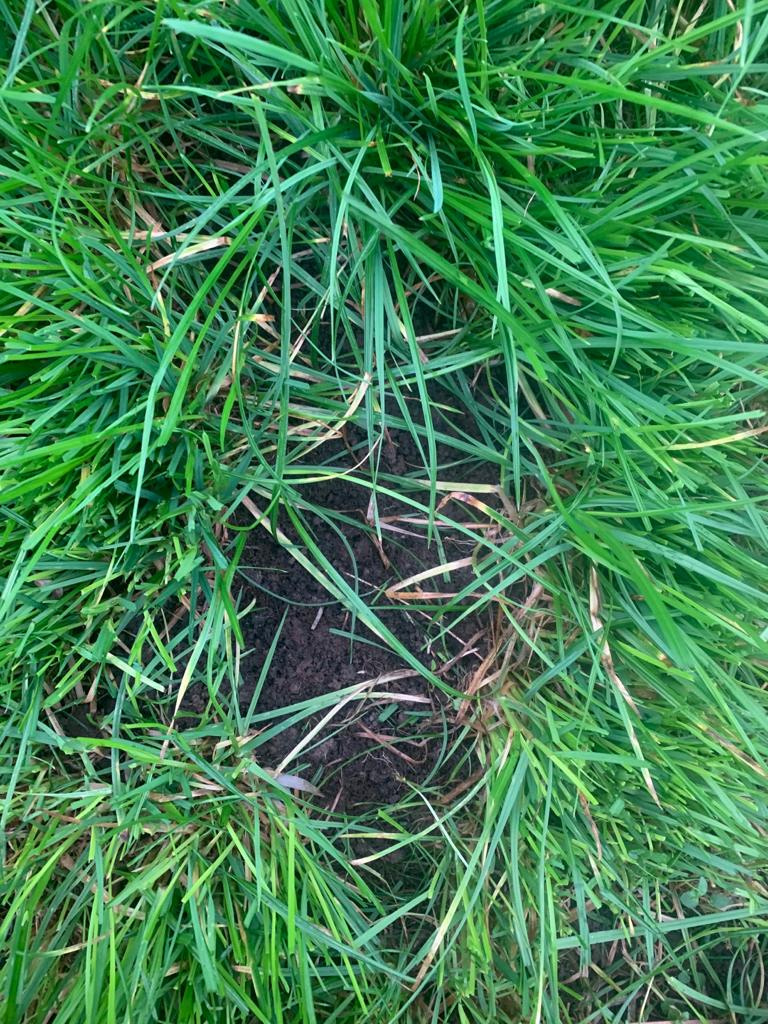
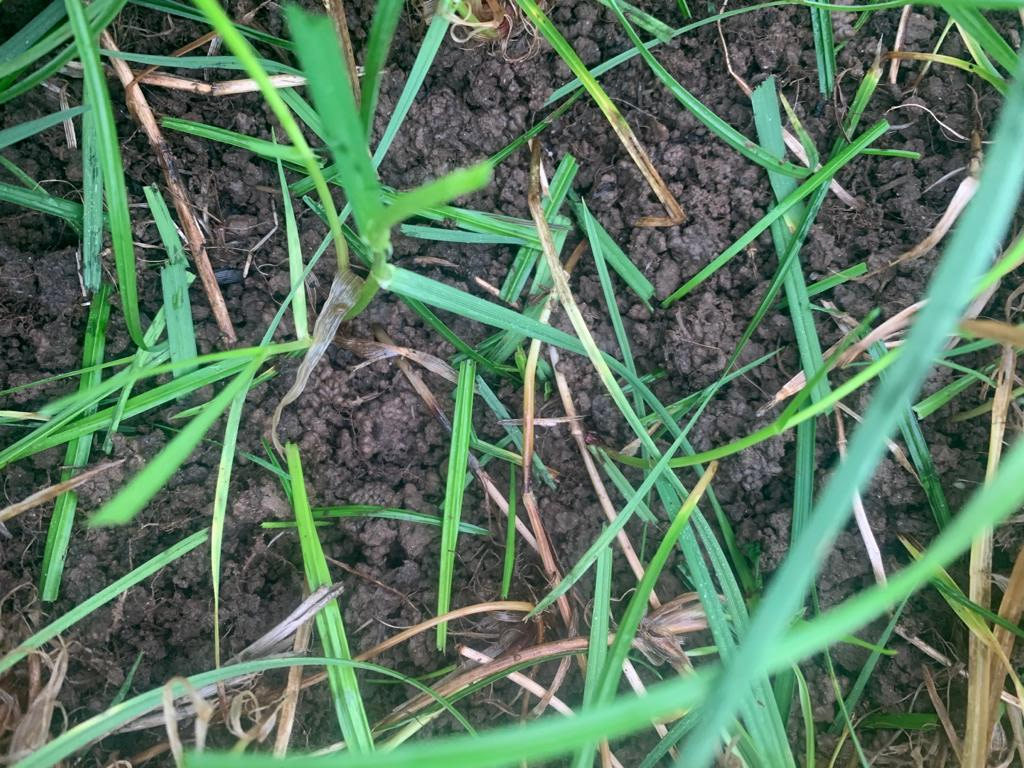 We were out this evening applying 10 units of foliar urea with some carbon on a field that was grazed 11 day ago.
We were out this evening applying 10 units of foliar urea with some carbon on a field that was grazed 11 day ago.
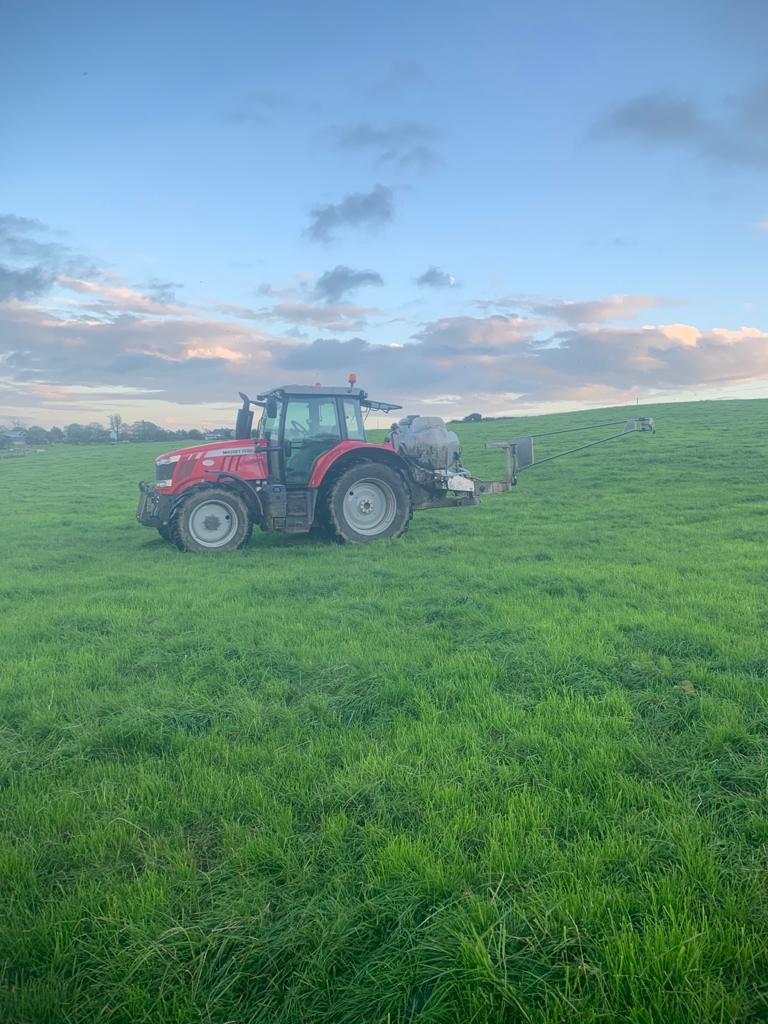 Clean out previously wasn’t the best due to bad weather but the growth has been phenomenal. Alot of farmers are saying that it has been a good year to grow grass. August and September are great months for soils to release nitrogen from its own stores if weather conditions are favourable. This year certainly seems like one of those years. Trial work being carried out on the Tow And Fert up the country is showing very good growth rates on grazing plots receiving no nitrogen. Would it be an idea to leave a small area of a grazing paddock on our own farms so we can judge how well grass is growing without nitrogen particularly in a year like this when soils seems to be helping us so much?
Clean out previously wasn’t the best due to bad weather but the growth has been phenomenal. Alot of farmers are saying that it has been a good year to grow grass. August and September are great months for soils to release nitrogen from its own stores if weather conditions are favourable. This year certainly seems like one of those years. Trial work being carried out on the Tow And Fert up the country is showing very good growth rates on grazing plots receiving no nitrogen. Would it be an idea to leave a small area of a grazing paddock on our own farms so we can judge how well grass is growing without nitrogen particularly in a year like this when soils seems to be helping us so much?
August 10th 2020:
We have had a few weeks where we applied granular instead of foliar due to a machine breakdown (they do breakdown now and again) and a family holiday. Its interesting to see that the higher rate of granular did not yield anymore grass than the lower rates rates of foliar. Anyway we are back into our normal routine of foliar fertiliser and cows are currently yielding 1.9 Kg MS/cow/day on 3 Kg of 13% dairy nut from our local co-op but is being reduced 2.5 Kg. Clover is starting to really take off in paddocks and contribute nicely to the tank. We have 35 to 45 acres earmarked for bales and will start oversowing grass in some paddocks this week and also start aerating soils as soil conditions are ideal for this job at the moment. August 3rd Figures: Farm Cover (Kg DM/Ha): 803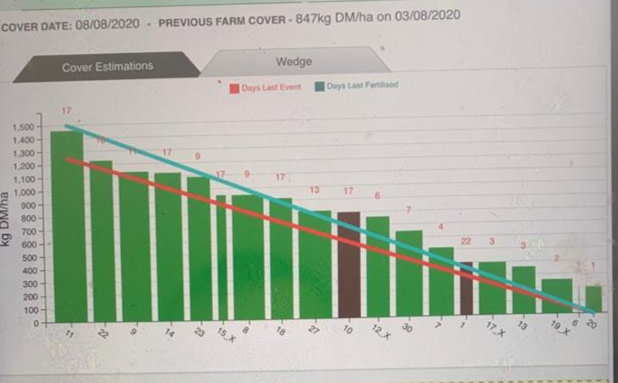
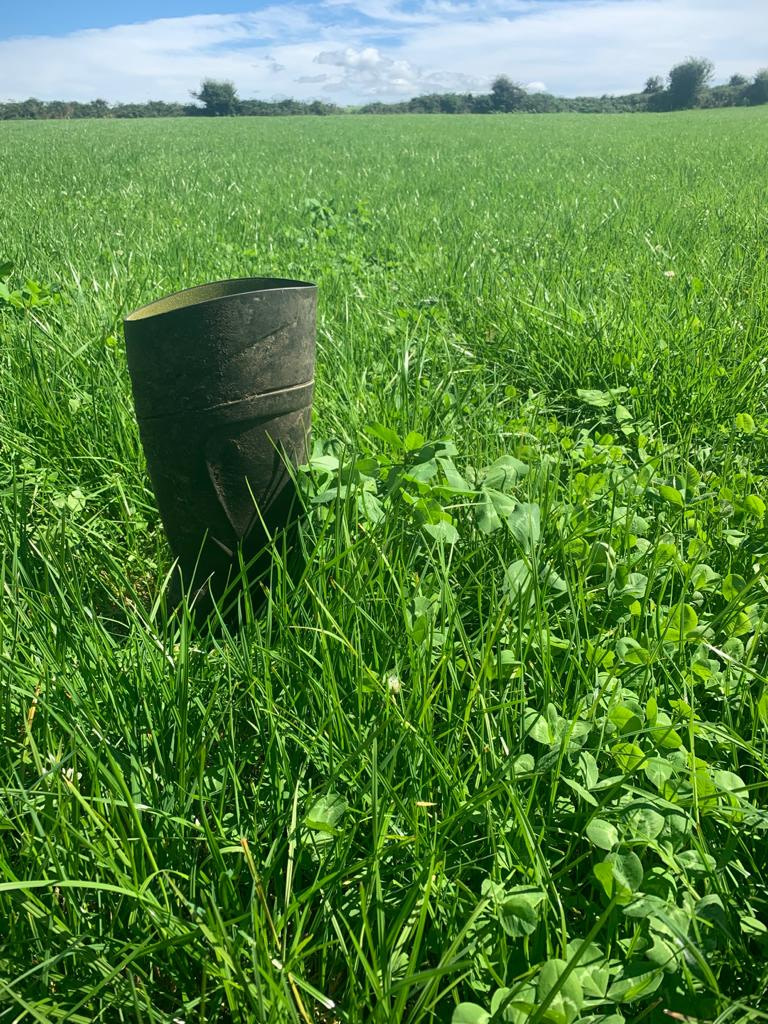 Picture is of ground harvested for 2nd cut and had 18 units of nitrogen applied – this was taken 17 days after cutting.
July 24th 2020 Grass Wedge:
Picture is of ground harvested for 2nd cut and had 18 units of nitrogen applied – this was taken 17 days after cutting.
July 24th 2020 Grass Wedge: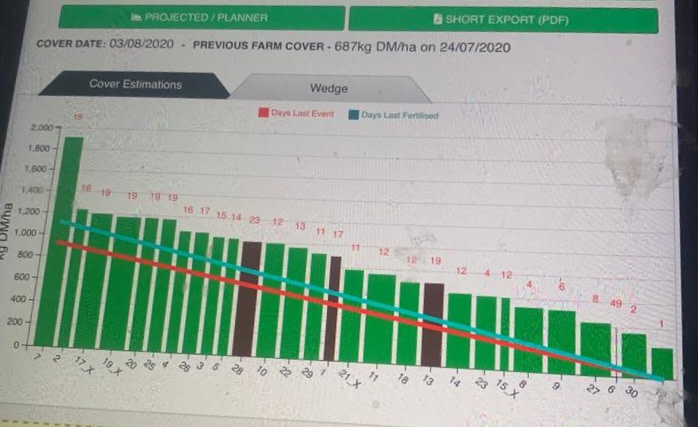
July 19th 2020:
Currently averaging 1.91 Kgs MS/Cow/Day on 4kgs of a 13% protein dairy nut. 46 surplus bales taken off the milking platform on 15th July. We will take out more bales from the grazing platform next week and we are following paddocks that are baled with parlour washings and 8 units of n through the Tow and Fert. 2nd cut silage will be fit to cut this week coming. Current fertiliser mix on grazing paddocks is 16 units of urea, carbon source, humates, little foliar P & K, boron and a splash of seaweed. Will carry out a grass walk tomorrow and update asap but know by looking at the farm that we have had the best week of growth so far this year. The farm is looking fantastic and cows are happy grazing top quality grass as the pictures show.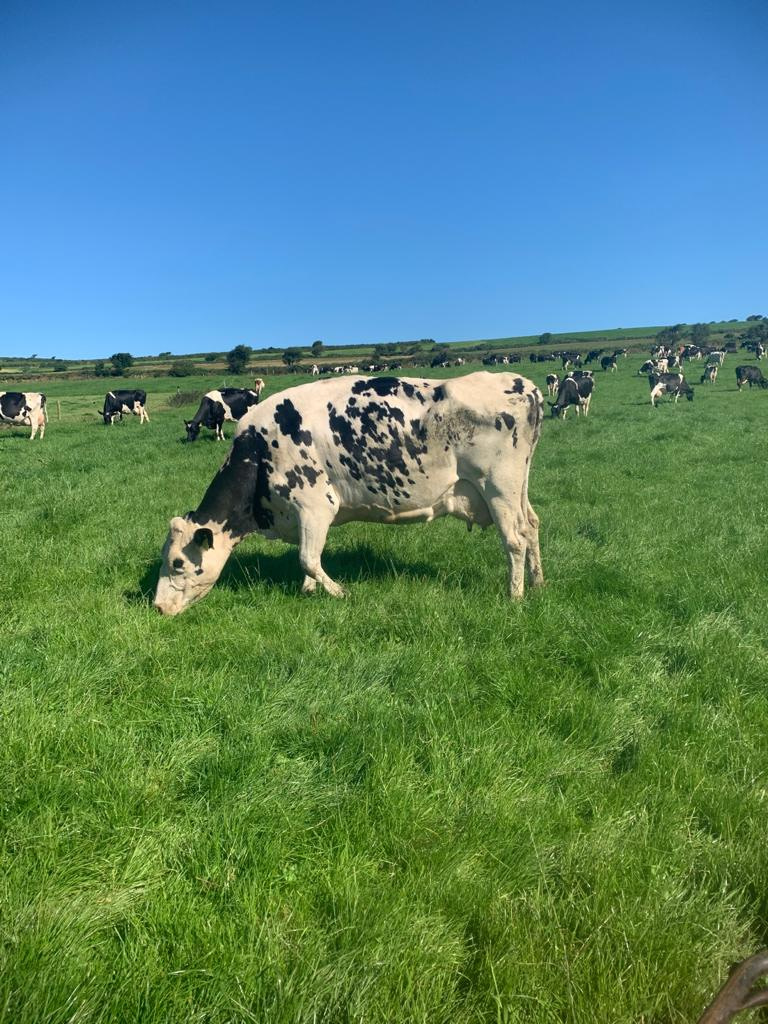
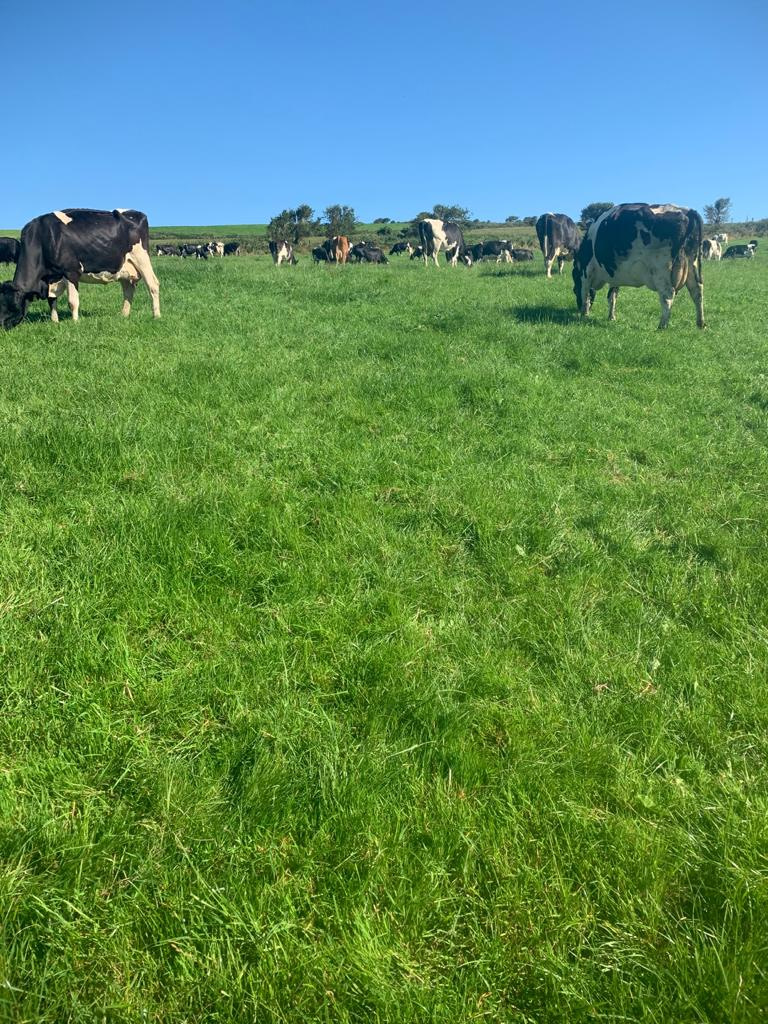
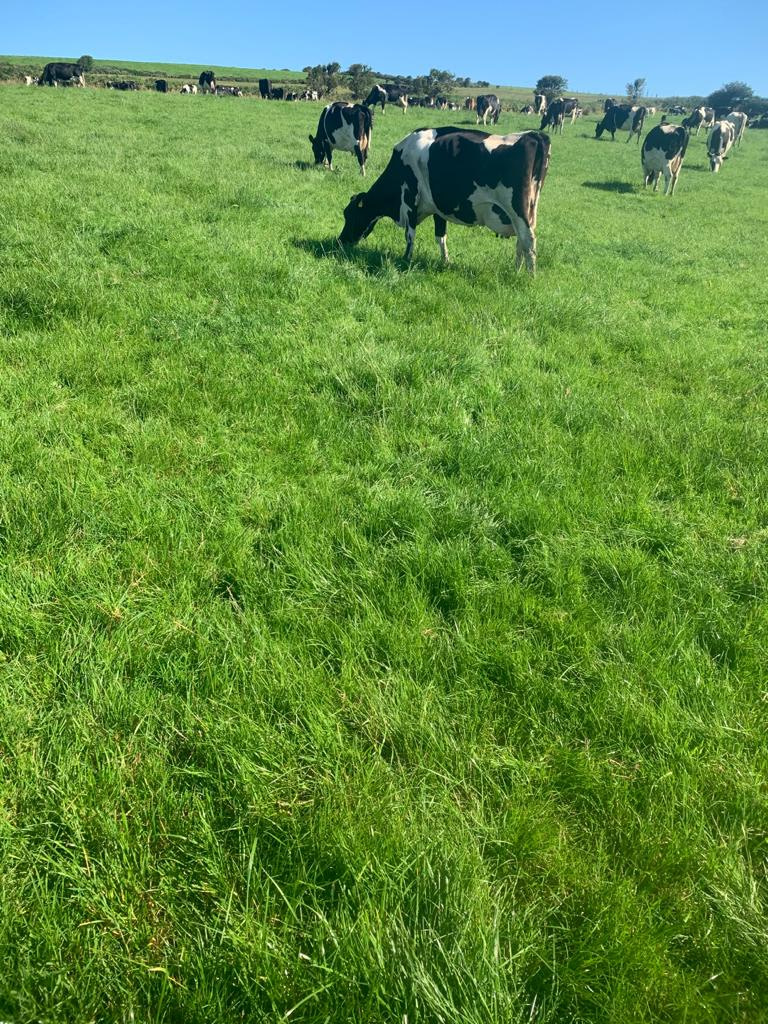 –>
–>
July 2nd 2020:
Thankfully the rain has finally kicked in and growth is starting to recover. Covers were starting to drop below where we felt comfortable with so we fed about 5 Kg DM of good quality silage for a week up until this Monday along with 4 Kg of meal. Cows will remain on 4 Kg meal – MS/cow/day is about 2.1 Kg. 10 acres is earmarked for reseeding and this will be sprayed off and reseeded with a guttler. I prefer not to plough fields where possible to keep the fertility up top near the main root mass and maintain our organic matter and soil carbon levels. It is not always possible but where it is, we don’t use the plough. Paddocks this week got a round of 18 units of liquid N with carbon. We played around with some different mixes before the rain came and found grass greened up better when some other nutrients were added – more on this in the coming weeks. Farm Cover (Kg DM/Ha): 621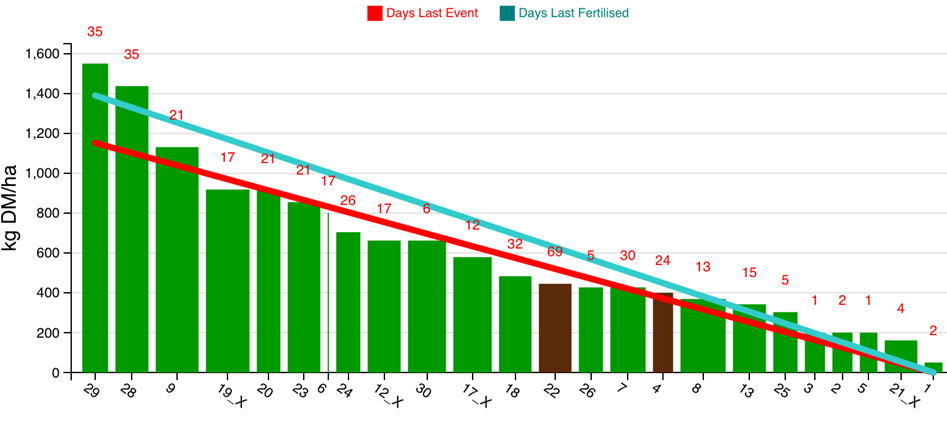 Some very interesting research was published recently by the Rothamsted research institute in the UK on the important role soil biology has to play in soil structure, water retention and drainage. It is worth a look – https://www.rothamsted.ac.uk/news/where-there’s-muck-there’s-brass
Coming next – grass growth update and how to assess soil structure on your farm.
Some very interesting research was published recently by the Rothamsted research institute in the UK on the important role soil biology has to play in soil structure, water retention and drainage. It is worth a look – https://www.rothamsted.ac.uk/news/where-there’s-muck-there’s-brass
Coming next – grass growth update and how to assess soil structure on your farm.
June 18th 2020:
Apologies for not being able to update last week – things were hectic! Farm Cover (Kg DM/Ha): 838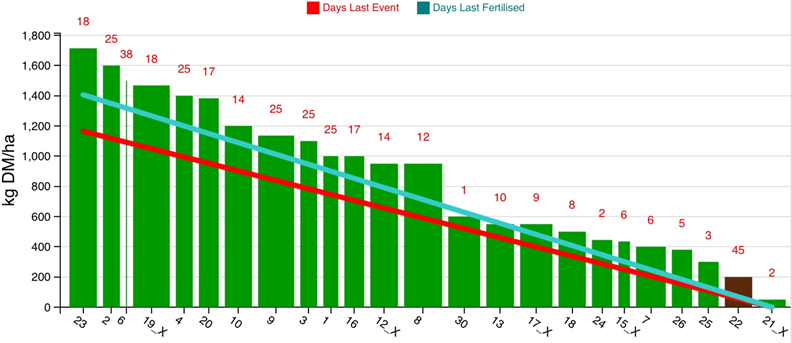 The lack of rain is biting here and grass is getting tight. We are feeding aftergrass by day, pre-mowed stemmy paddocks by night, 4 kgs of meal, and achieving 1.95 kgs of milk solids. Milk protein has improved since the aftergrass came in. 16 units/acre of liquid urea is being used currently on grazing paddocks. Second cut ground got ½ bag of ammonium sulphate/acre as liquid + carbon source. plus 2500 gal/acre of watery slurry through the trailing shoe.
The lack of rain is biting here and grass is getting tight. We are feeding aftergrass by day, pre-mowed stemmy paddocks by night, 4 kgs of meal, and achieving 1.95 kgs of milk solids. Milk protein has improved since the aftergrass came in. 16 units/acre of liquid urea is being used currently on grazing paddocks. Second cut ground got ½ bag of ammonium sulphate/acre as liquid + carbon source. plus 2500 gal/acre of watery slurry through the trailing shoe.
Boron:
The comprehensive soil tests we took back in 2017 revealed a shortage of readily available boron across the farm. Normally you would hear of boron being used in root crops and beet but we are told that boron needs to be at a minimum level also for grass – not necessarily for grass growth but for root mass and root depth. We need deep roots to help improve soil structure and access nutrients deep in the soil profile. Boron is needed to help roots repair damage at the root tips when they are burrowing into the soil – a lack of boron will therefore hinder root growth. This is why we apply Boron through our Tow And Fert once a year across all the ground. It can be bought as a powder or as a liquid so a normal farm sprayer allows you to put it out also. On light soils it is important to put a carbon source with Boron to prevent it leaching away. There is a fascinating article from New Zealand online detailing how very small amounts of foliar applied Boron can reduce MUN levels in milk see – https://www.ruralnewsgroup.co.nz/dairy-news/dairy-management/foliar-applied-boron-can-reduce-milk-urea Next week – grass growth update.June 4th:
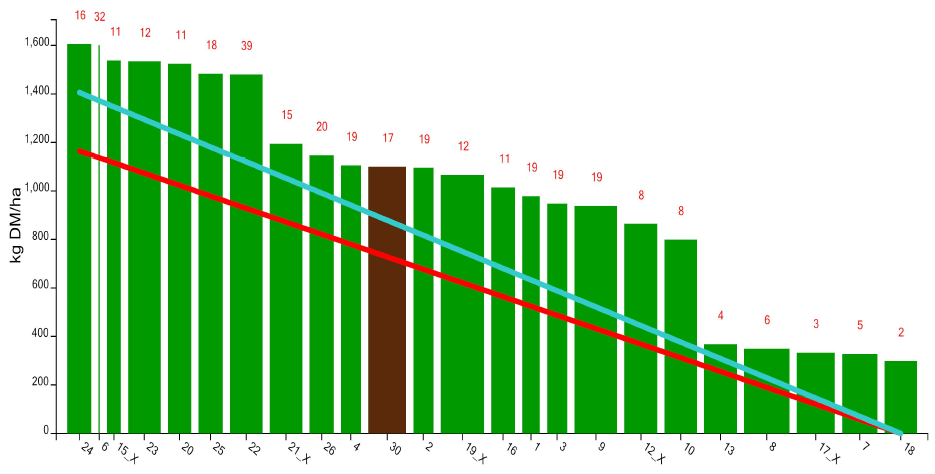
The importance of slurry:
Slurry gives us a great response in growth rates on this farm especially in the spring time and we do our upmost to utilise every gallon of it. We started using Slurrycal back in 2016 and have used it every year since to biologically treat the slurry. We find that the smell is greatly reduced as is agitation and the growth response has increased. We invested in a trailing shoe in 2017 and now use that to help us skip some fertiliser early in the year. Grazing fields with low covers in the spring time will get a round of slurry at around 2 – 2,500 gallons/acre with nitrogen skipped then for that round and again during the year when the weather is suitable. We try our best to apply when ground condition will allow the slurry to be utilised fully – not too wet, dry or sunny! Last year we tested slurry again to see what the nutrient profile was and it reinforces the value of this valuable product.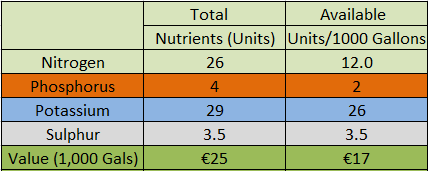 We are often told that slurry has about 7 – 10 units of nitrogen available. What we aren’t told is that there could be double that figure in organic nitrogen also there that has the potential to be utilised at a future date when it becomes mineralised and available for growth. Potash is an expensive fertiliser to buy so when you know that every 1,000 gallons of slurry has 26 units of Potash available and a further 3 units that potentially will go into soil reserves you learn to respect the value of what you are storing and spreading. All our silage ground receives 2,500 gallons/acre to ensure the potash we remove is put right back – our soil Potash levels tend to be on the lower side as are our Potash “reserves”.
On a like for like basis with bagged fertiliser our slurry is worth €25/1000 gallons – like bagged fertiliser not all the nutrients spread will get utilised immediately. Some, like Phosphorus will get bound to calcium and end up in “reserves” in the soil. In terms of immediate availability of nutrients our slurry is worth €17/1,000 gallons. These figures do not take into account the other nutrients present like calcium, magnesium, trace elements and the very high amount of carbon also present which is invaluable for building healthy soils – none of which come in a typical bag of fertiliser.
We are often told that slurry has about 7 – 10 units of nitrogen available. What we aren’t told is that there could be double that figure in organic nitrogen also there that has the potential to be utilised at a future date when it becomes mineralised and available for growth. Potash is an expensive fertiliser to buy so when you know that every 1,000 gallons of slurry has 26 units of Potash available and a further 3 units that potentially will go into soil reserves you learn to respect the value of what you are storing and spreading. All our silage ground receives 2,500 gallons/acre to ensure the potash we remove is put right back – our soil Potash levels tend to be on the lower side as are our Potash “reserves”.
On a like for like basis with bagged fertiliser our slurry is worth €25/1000 gallons – like bagged fertiliser not all the nutrients spread will get utilised immediately. Some, like Phosphorus will get bound to calcium and end up in “reserves” in the soil. In terms of immediate availability of nutrients our slurry is worth €17/1,000 gallons. These figures do not take into account the other nutrients present like calcium, magnesium, trace elements and the very high amount of carbon also present which is invaluable for building healthy soils – none of which come in a typical bag of fertiliser.
Next week – Grass update and the importance of Boron for soil and plant health
May 28th:
We walked the farm on Tuesday to do a farm cover and we were relatively happy with what we measured and saw: Farm Cover (Kg DM/Ha): 804 Growth Rate (Kg DM/Ha): 58 L.U./Ha: 4.34 – 28 Ha closed for remainder of 1st cut getting knocked in next few days. 15 units/acre of foliar urea is being currently applied to grazing paddocks and walking the farm today grass has really moved on in the last two days. This is due to the inch of rain that fell late last week which was most welcome so we expect to see a big increase in growth rates on next week’s grass walk. Our “test” grazing paddock – no 7 seems to be running out of steam so we are going to top up most of it with some foliar urea but leave some without any nitrogen.
We cut and weighed quadrants on our “test” silage field today before it is knocked for silage and we are more than happy with the results. It has received a total of 36 units of nitrogen/acre versus 80 units in every other silage field – yield will be an impressive 14 tonnes/acre (6.65T DM/Ha).
15 units/acre of foliar urea is being currently applied to grazing paddocks and walking the farm today grass has really moved on in the last two days. This is due to the inch of rain that fell late last week which was most welcome so we expect to see a big increase in growth rates on next week’s grass walk. Our “test” grazing paddock – no 7 seems to be running out of steam so we are going to top up most of it with some foliar urea but leave some without any nitrogen.
We cut and weighed quadrants on our “test” silage field today before it is knocked for silage and we are more than happy with the results. It has received a total of 36 units of nitrogen/acre versus 80 units in every other silage field – yield will be an impressive 14 tonnes/acre (6.65T DM/Ha).

 This replicates what we achieved in previous years and we are going to try this same approach for other fields for 2nd cut silage. I think this is a game changer for helping us reduce our nitrogen input across the whole farm – for grazing and now silage production.
This replicates what we achieved in previous years and we are going to try this same approach for other fields for 2nd cut silage. I think this is a game changer for helping us reduce our nitrogen input across the whole farm – for grazing and now silage production.
Phosphorus Deficiency (PICA):
As I relayed in the first bog post, our cows showed extreme signs of phosphorus deficiency back in 2015/2016 and we took the standard advice of increasing the use of P fertiliser to counteract it along with supplementing cows with extra phosphorus. We were advised to apply 1 bag/acre of 16% Superphos in Autumn of 2015 across all the ground which we did and soil tests were taken in January 2016 to assess the improvement. We were surprised to see that the levels had not changed one bit. The table below shows the average P level and range across our farm in January 2016 and again in January 2019. After exhausting all normal options to tackle our PICA problem we took a different approach and implemented a biological program in early 2017. From January 2017 to January 2019 our P levels increased about 50% despite applying little to no P fertiliser in those intervening 2 years. We had discovered through comprehensive soil tests that we had close to 900 ppm of phosphorus locked up (or in reserves) in our soils as have most Irish farmers. So we put a soil biology plan in place which included applying a biological inoculant to the soil to release some of the phosphorus reserves and as a result we have significantly reduced the amount of P fertiliser purchased. The PICA in our cows disappeared as did a significant spend on P fertiliser and phosphorus supplements for the cows.
After exhausting all normal options to tackle our PICA problem we took a different approach and implemented a biological program in early 2017. From January 2017 to January 2019 our P levels increased about 50% despite applying little to no P fertiliser in those intervening 2 years. We had discovered through comprehensive soil tests that we had close to 900 ppm of phosphorus locked up (or in reserves) in our soils as have most Irish farmers. So we put a soil biology plan in place which included applying a biological inoculant to the soil to release some of the phosphorus reserves and as a result we have significantly reduced the amount of P fertiliser purchased. The PICA in our cows disappeared as did a significant spend on P fertiliser and phosphorus supplements for the cows.
Next Week: Grass update and the value of slurry on our farm and how we maximise it!
Hi there. My name is Thomas Griffin and I farm here with my family in Timoleague in West Cork. We currently milk 200 high EBI spring calving Friesian cows in a grass based system with an effective SR of 2.55 LU/Ha. We measure grass weekly and all data is inputted into Pasture Base Ireland. Last year we averaged 14 T DM/Ha with 525 Kg MS/cow sold. We have 2 labour units and all heifers are contract reared off-farm.

Background:
In 2015/2016 we had quite a significant problem with phosphorus deficiency in our cows. During the grazing season cows were ravenous for odd stuff like stones, plastic pipes and the seat off the quad!! We were supplementing with phosphorus and increased the amount of phosphorus fertiliser applied as per our local advisers. We expected to see our P levels and soil indexes increase but they didn’t. They were the same or dropped and the symptoms of deficiency in the cows continued unless they were supplemented full time. It bugged me why increasing our use of phosphorus fertiliser would not increase our soil P index and I began to look for answers. In the summer of 2016 I saw an editorial in the Irish Farmers Journal on a new machine called the Tow And Fert from New Zealand. It was being imported by Leslie Dwyer for applying liquid urea to grass to reduce the levels of nitrogen used on farm. I contacted Leslie and asked him to carry out a few demos on the farm on different paddocks over a few occasions and we were relatively happy with what we saw and bought the 1200 litre dual boom model. In order to fully assess the potential of our soils and identify major deficiencies, Leslie advised us to have comprehensive soil tests taken which we did in January 2017. To my astonishment, the soil tests revealed that we had 1500 Kg/Ha (750 ppm) of phosphorus “locked up” in our soils but available levels were still too low. We put a biological program in place to release some of these locked up reserves and thankfully since that year our cows have not showed any signs of a phosphorus deficiency and we have been able to stop extra phosphorus supplementation. In the past 2 years we have applied very little phosphorus fertiliser to grazing ground and recent soil tests show our indexes have increased significantly. This is as a result of implementing a biological fertiliser plan to improve soil biology, increase earthworm numbers and thereby release reserves of locked up nutrients.YTD 2019:
Our target this year is to grow 14 t DM/Ha with a maximum of 175 Kg N/Ha (140 units N/acre). All grazing and silage fields received a granular application of 11 units of nitrogen with sulphur in late January and have also been treated with a soil biology enhancer and nitrogen fixing inoculant. All silage ground has received slurry (trailing shoe) at 2,500 gallons/acre. We have used Slurrycal since 2015 to ensure slurry is biologically treated and that combined with the trailing shoe is giving a fantastic response in growth. We optimise the use of slurry and see it as an extremely important nutrient source and biological feed for soil. Paddocks with the lowest covers received an application of slurry (trailing shoe) when condition allowed in January/February. After each grazing we apply 15 units/acre of nitrogen (all liquid urea through the Tow and Fert) when grass covers hit 500- 700 Kg DM/Ha. This is to ensure that the liquid urea mix is taken up through the leaf and as little as possible through the soil. We are currently half way into the 3rd rotation and have used 41 units of nitrogen/acre maximum on paddocks. Paddocks that received slurry have had a total of 26 units N/acre and we are skipping odd paddocks with nitrogen to see what growth response we are getting from the nitrogen fixing products.
May 13th:
Cutting 25 acres of top quality silage (earmarked for milking cows this Autumn or next spring). This ground received slurry and 3 bags/acre of Dairy Select (23-2.5-10-4S). We are tedding it out to get it close to 30% DM and an additive supplied by our local co-op will be applied. All 2nd cut silage ground will then get slurry at 2,500 gals/acre We have a 2.5 acre silage field that we use as a test field to see how we can reduce the level of nitrogen needed for silage production. To date this has received 11 units of granular nitrogen with sulphur and 25 units of liquid urea – a total of 36 units of chemical nitrogen. I am very happy with the grass production so far and will let you know how this little trial turns out.May 21st:

October 27th:
September 25th 2020:
This week was D-day in terms of assessing how much fertiliser and how much nitrogen specifically was used in total for the year. Calculations are made easier with all fertiliser purchased through our local co-op, Barryroe and do not include the 5.5 acres of maize silage. We set a target of 140 units/acre total for the grazing and silage ground at the start of the year and hit it exactly despite a few small hiccups.

This represents a significant reduction of use from previous years and we are delighted with what we have achieved and the savings made. We have room for further improvement and will set a new target at the start of 2021.
Areas to save on further nitrogen inputs are on silage production where 36 units/acre of a combination of foliar and granular over the past few years proved to be as productive as 80 units of granular. We had two minor breakdowns with our Tow and Fert this year and Covid-19 impacted on getting spare parts quickly – we had to resort to using higher rates of granular in these cases but took the opportunity to apply protected urea with K to top up K levels on some paddocks.
We are also quite optimistic that the nitrogen fixing biological products we are currently trialling will allow us to reduce nitrogen fertiliser use further next year. This optimism is driven by the incredible improvements we have seen in our soil structure and soil health. I took out the shovel this week to dig some soil pits in fields and the pictures tell a thousand words – nice crumbly moist soil and an abundance of earthworms. Improved soil structure helps soil biology to do more of the work nature designed it to do – fix nitrogen from the air in the soil and the sky, release for grass the phosphorus, potassium and other nutrients locked up in the soil and store carbon in the soil in a form that is stable and will last for 100-1000 years.








September 18th 2020:
Farm is really humming at the moment with this fine weather and grass is ticking along nicely. Cows are averaging 1.79 Kg MS/cow/day on 4 kg of dairy nuts and grazed grass. We put out our last load of foliar nitrogen on Monday and all that is left to go out now is one more load of the new biological test product we are assessing for FuturAg. With the fine weather soil is is dry enough to carry out some aeration after grazing and get some loads of dirty water out also. 
Farm Cover (Kg DM/Ha): 976
Growth Rate (Kg DM/Ha): 57
We are thrilled with growth rates to date and the way the farm has progressed with what we consider to be low rates of nitrogen. Next week we will be adding up the total amount of fertiliser used for the season and will give you full details on the next blog post.
We scanned last week and empty rate was 8% (up from 5% last year) which we were happy with as it was all A.I.

September 3rd 2020:
Cows are averaging 1.83 Kg MS/cow/day on 4 kg of dairy nuts and grazed grass only. We took 80 bales of silage off the milking platform the last Saturday in August and we are applying 10 units/acre of nitrogen with a carbon source currently.
Farm Cover (Kg DM/Ha): 811
Growth Rate (Kg DM/Ha): 55

We are trialling a new biological product from FuturAg and have begun to apply it to all the grazing paddocks along with the last round of foliar nitrogen. This product is designed to supply nitrogen (similar to how clover works) to growing grass from the soil and air for the next 40 – 60 days. This is somewhat weather dependent and a relatively dry September and October will give the potential for greater success. It also contains other biological species to help with soil structure and release small amounts of other nutrients (such as P & K) locked up in the soil. It is designed to be applied every 60 days and if it works we hope it will allow us to further reduce our rates of nitrogen next year – I will keep you posted!!
August 27th 2020:
Growth is absolutely flying here at the moment. We have been applying watery slurry to paddocks and the response in growth is amazing – if I had enough watery slurry every rotation we would need very little bag nitrogen to grow grass. The X factor in slurry is something that bag fertiliser just will never achieve!
August 26th Figures:
Farm Cover (Kg DM/Ha): 830
Growth Rate (Kg DM/Ha): 77

Cows are milking 1.85 Kg MS/cow/day on 4 kg of dairy nuts and 4 Kgs DM of dry bale silage. With the atrocious conditions grass is extremely wet and we are keen to keep intakes and yields up so having dry bale silage is a great help at the moment. We will pull out the bale silage as soon as weather improves. Our ground is taking the rain and is alive with earthworms as the pictures below show – earthworm activity and soil structure are crucial in weather like this to get water draining through the soil profile quickly.
These pictures are from a dungpat in a field that was only 7 weeks old. The earthworms have completely eaten the dungpat and have left beautiful crumbly soil behind.


We were out this evening applying 10 units of foliar urea with some carbon on a field that was grazed 11 day ago.

Clean out previously wasn’t the best due to bad weather but the growth has been phenomenal. Alot of farmers are saying that it has been a good year to grow grass. August and September are great months for soils to release nitrogen from its own stores if weather conditions are favourable. This year certainly seems like one of those years. Trial work being carried out on the Tow And Fert up the country is showing very good growth rates on grazing plots receiving no nitrogen. Would it be an idea to leave a small area of a grazing paddock on our own farms so we can judge how well grass is growing without nitrogen particularly in a year like this when soils seems to be helping us so much?
August 10th 2020:
We have had a few weeks where we applied granular instead of foliar due to a machine breakdown (they do breakdown now and again) and a family holiday. Its interesting to see that the higher rate of granular did not yield anymore grass than the lower rates rates of foliar. Anyway we are back into our normal routine of foliar fertiliser and cows are currently yielding 1.9 Kg MS/cow/day on 3 Kg of 13% dairy nut from our local co-op but is being reduced 2.5 Kg. Clover is starting to really take off in paddocks and contribute nicely to the tank. We have 35 to 45 acres earmarked for bales and will start oversowing grass in some paddocks this week and also start aerating soils as soil conditions are ideal for this job at the moment.
August 3rd Figures:
Farm Cover (Kg DM/Ha): 803
Growth Rate (Kg DM/Ha): 89
L.U./Ha: 3.88


Picture is of ground harvested for 2nd cut and had 18 units of nitrogen applied – this was taken 17 days after cutting.
July 24th 2020 Grass Wedge:
July 19th 2020:
Currently averaging 1.91 Kgs MS/Cow/Day on 4kgs of a 13% protein dairy nut. 46 surplus bales taken off the milking platform on 15th July. We will take out more bales from the grazing platform next week and we are following paddocks that are baled with parlour washings and 8 units of n through the Tow and Fert. 2nd cut silage will be fit to cut this week coming.
Current fertiliser mix on grazing paddocks is 16 units of urea, carbon source, humates, little foliar P & K, boron and a splash of seaweed. Will carry out a grass walk tomorrow and update asap but know by looking at the farm that we have had the best week of growth so far this year. The farm is looking fantastic and cows are happy grazing top quality grass as the pictures show.



July 2nd 2020:
Thankfully the rain has finally kicked in and growth is starting to recover. Covers were starting to drop below where we felt comfortable with so we fed about 5 Kg DM of good quality silage for a week up until this Monday along with 4 Kg of meal. Cows will remain on 4 Kg meal – MS/cow/day is about 2.1 Kg.
10 acres is earmarked for reseeding and this will be sprayed off and reseeded with a guttler. I prefer not to plough fields where possible to keep the fertility up top near the main root mass and maintain our organic matter and soil carbon levels. It is not always possible but where it is, we don’t use the plough. Paddocks this week got a round of 18 units of liquid N with carbon. We played around with some different mixes before the rain came and found grass greened up better when some other nutrients were added – more on this in the coming weeks.
Farm Cover (Kg DM/Ha): 621
Growth Rate (Kg DM/Ha): 58
L.U./Ha: 3.54

Some very interesting research was published recently by the Rothamsted research institute in the UK on the important role soil biology has to play in soil structure, water retention and drainage. It is worth a look – https://www.rothamsted.ac.uk/news/where-there’s-muck-there’s-brass
Coming next – grass growth update and how to assess soil structure on your farm.
June 18th 2020:
Apologies for not being able to update last week – things were hectic!
Farm Cover (Kg DM/Ha): 838
Growth Rate (Kg DM/Ha): 44
L.U./Ha: 3.58

The lack of rain is biting here and grass is getting tight. We are feeding aftergrass by day, pre-mowed stemmy paddocks by night, 4 kgs of meal, and achieving 1.95 kgs of milk solids. Milk protein has improved since the aftergrass came in. 16 units/acre of liquid urea is being used currently on grazing paddocks. Second cut ground got ½ bag of ammonium sulphate/acre as liquid + carbon source. plus 2500 gal/acre of watery slurry through the trailing shoe.
Boron:
The comprehensive soil tests we took back in 2017 revealed a shortage of readily available boron across the farm. Normally you would hear of boron being used in root crops and beet but we are told that boron needs to be at a minimum level also for grass – not necessarily for grass growth but for root mass and root depth. We need deep roots to help improve soil structure and access nutrients deep in the soil profile. Boron is needed to help roots repair damage at the root tips when they are burrowing into the soil – a lack of boron will therefore hinder root growth. This is why we apply Boron through our Tow And Fert once a year across all the ground. It can be bought as a powder or as a liquid so a normal farm sprayer allows you to put it out also. On light soils it is important to put a carbon source with Boron to prevent it leaching away.
There is a fascinating article from New Zealand online detailing how very small amounts of foliar applied Boron can reduce MUN levels in milk see – https://www.ruralnewsgroup.co.nz/dairy-news/dairy-management/foliar-applied-boron-can-reduce-milk-urea
Next week – grass growth update.
June 4th:
Delighted with the farm walk this week and as expected the inch of rain two weeks ago really kicked in and growth rates moved on:
Farm Cover (Kg DM/Ha): 946
Growth Rate (Kg DM/Ha): 90
L.U./Ha: 3.58
We are still applying about 15 units/acre of foliar urea so really happy with growth rates considering the relatively low rate of nitrogen used. Foliar urea is a much more efficient way of using the nitrogen we buy and gives us the added flexibility of topping up with nutrients like Boron for example which we will start adding to the mix over the next few weeks.

The importance of slurry:
Slurry gives us a great response in growth rates on this farm especially in the spring time and we do our upmost to utilise every gallon of it. We started using Slurrycal back in 2016 and have used it every year since to biologically treat the slurry. We find that the smell is greatly reduced as is agitation and the growth response has increased. We invested in a trailing shoe in 2017 and now use that to help us skip some fertiliser early in the year. Grazing fields with low covers in the spring time will get a round of slurry at around 2 – 2,500 gallons/acre with nitrogen skipped then for that round and again during the year when the weather is suitable. We try our best to apply when ground condition will allow the slurry to be utilised fully – not too wet, dry or sunny!
Last year we tested slurry again to see what the nutrient profile was and it reinforces the value of this valuable product.

We are often told that slurry has about 7 – 10 units of nitrogen available. What we aren’t told is that there could be double that figure in organic nitrogen also there that has the potential to be utilised at a future date when it becomes mineralised and available for growth. Potash is an expensive fertiliser to buy so when you know that every 1,000 gallons of slurry has 26 units of Potash available and a further 3 units that potentially will go into soil reserves you learn to respect the value of what you are storing and spreading. All our silage ground receives 2,500 gallons/acre to ensure the potash we remove is put right back – our soil Potash levels tend to be on the lower side as are our Potash “reserves”.
On a like for like basis with bagged fertiliser our slurry is worth €25/1000 gallons – like bagged fertiliser not all the nutrients spread will get utilised immediately. Some, like Phosphorus will get bound to calcium and end up in “reserves” in the soil. In terms of immediate availability of nutrients our slurry is worth €17/1,000 gallons. These figures do not take into account the other nutrients present like calcium, magnesium, trace elements and the very high amount of carbon also present which is invaluable for building healthy soils – none of which come in a typical bag of fertiliser.
Next week – Grass update and the importance of Boron for soil and plant health
May 28th:
We walked the farm on Tuesday to do a farm cover and we were relatively happy with what we measured and saw:
Farm Cover (Kg DM/Ha): 804
Growth Rate (Kg DM/Ha): 58
L.U./Ha: 4.34 – 28 Ha closed for remainder of 1st cut getting knocked in next few days.

15 units/acre of foliar urea is being currently applied to grazing paddocks and walking the farm today grass has really moved on in the last two days. This is due to the inch of rain that fell late last week which was most welcome so we expect to see a big increase in growth rates on next week’s grass walk. Our “test” grazing paddock – no 7 seems to be running out of steam so we are going to top up most of it with some foliar urea but leave some without any nitrogen.
We cut and weighed quadrants on our “test” silage field today before it is knocked for silage and we are more than happy with the results. It has received a total of 36 units of nitrogen/acre versus 80 units in every other silage field – yield will be an impressive 14 tonnes/acre (6.65T DM/Ha).


This replicates what we achieved in previous years and we are going to try this same approach for other fields for 2nd cut silage. I think this is a game changer for helping us reduce our nitrogen input across the whole farm – for grazing and now silage production.
Phosphorus Deficiency (PICA):
As I relayed in the first bog post, our cows showed extreme signs of phosphorus deficiency back in 2015/2016 and we took the standard advice of increasing the use of P fertiliser to counteract it along with supplementing cows with extra phosphorus. We were advised to apply 1 bag/acre of 16% Superphos in Autumn of 2015 across all the ground which we did and soil tests were taken in January 2016 to assess the improvement. We were surprised to see that the levels had not changed one bit. The table below shows the average P level and range across our farm in January 2016 and again in January 2019.

After exhausting all normal options to tackle our PICA problem we took a different approach and implemented a biological program in early 2017. From January 2017 to January 2019 our P levels increased about 50% despite applying little to no P fertiliser in those intervening 2 years. We had discovered through comprehensive soil tests that we had close to 900 ppm of phosphorus locked up (or in reserves) in our soils as have most Irish farmers. So we put a soil biology plan in place which included applying a biological inoculant to the soil to release some of the phosphorus reserves and as a result we have significantly reduced the amount of P fertiliser purchased. The PICA in our cows disappeared as did a significant spend on P fertiliser and phosphorus supplements for the cows.
Next Week: Grass update and the value of slurry on our farm and how we maximise it!
Hi there. My name is Thomas Griffin and I farm here with my family in Timoleague in West Cork. We currently milk 200 high EBI spring calving Friesian cows in a grass based system with an effective SR of 2.55 LU/Ha. We measure grass weekly and all data is inputted into Pasture Base Ireland. Last year we averaged 14 T DM/Ha with 525 Kg MS/cow sold. We have 2 labour units and all heifers are contract reared off-farm.

Background:
In 2015/2016 we had quite a significant problem with phosphorus deficiency in our cows. During the grazing season cows were ravenous for odd stuff like stones, plastic pipes and the seat off the quad!! We were supplementing with phosphorus and increased the amount of phosphorus fertiliser applied as per our local advisers. We expected to see our P levels and soil indexes increase but they didn’t. They were the same or dropped and the symptoms of deficiency in the cows continued unless they were supplemented full time. It bugged me why increasing our use of phosphorus fertiliser would not increase our soil P index and I began to look for answers.
In the summer of 2016 I saw an editorial in the Irish Farmers Journal on a new machine called the Tow And Fert from New Zealand. It was being imported by Leslie Dwyer for applying liquid urea to grass to reduce the levels of nitrogen used on farm. I contacted Leslie and asked him to carry out a few demos on the farm on different paddocks over a few occasions and we were relatively happy with what we saw and bought the 1200 litre dual boom model. In order to fully assess the potential of our soils and identify major deficiencies, Leslie advised us to have comprehensive soil tests taken which we did in January 2017. To my astonishment, the soil tests revealed that we had 1500 Kg/Ha (750 ppm) of phosphorus “locked up” in our soils but available levels were still too low. We put a biological program in place to release some of these locked up reserves and thankfully since that year our cows have not showed any signs of a phosphorus deficiency and we have been able to stop extra phosphorus supplementation. In the past 2 years we have applied very little phosphorus fertiliser to grazing ground and recent soil tests show our indexes have increased significantly. This is as a result of implementing a biological fertiliser plan to improve soil biology, increase earthworm numbers and thereby release reserves of locked up nutrients.
YTD 2019:
Our target this year is to grow 14 t DM/Ha with a maximum of 175 Kg N/Ha (140 units N/acre). All grazing and silage fields received a granular application of 11 units of nitrogen with sulphur in late January and have also been treated with a soil biology enhancer and nitrogen fixing inoculant. All silage ground has received slurry (trailing shoe) at 2,500 gallons/acre. We have used Slurrycal since 2015 to ensure slurry is biologically treated and that combined with the trailing shoe is giving a fantastic response in growth. We optimise the use of slurry and see it as an extremely important nutrient source and biological feed for soil.
Paddocks with the lowest covers received an application of slurry (trailing shoe) when condition allowed in January/February. After each grazing we apply 15 units/acre of nitrogen (all liquid urea through the Tow and Fert) when grass covers hit 500- 700 Kg DM/Ha. This is to ensure that the liquid urea mix is taken up through the leaf and as little as possible through the soil. We are currently half way into the 3rd rotation and have used 41 units of nitrogen/acre maximum on paddocks. Paddocks that received slurry have had a total of 26 units N/acre and we are skipping odd paddocks with nitrogen to see what growth response we are getting from the nitrogen fixing products.

May 13th:
Cutting 25 acres of top quality silage (earmarked for milking cows this Autumn or next spring). This ground received slurry and 3 bags/acre of Dairy Select (23-2.5-10-4S). We are tedding it out to get it close to 30% DM and an additive supplied by our local co-op will be applied. All 2nd cut silage ground will then get slurry at 2,500 gals/acre
We have a 2.5 acre silage field that we use as a test field to see how we can reduce the level of nitrogen needed for silage production. To date this has received 11 units of granular nitrogen with sulphur and 25 units of liquid urea – a total of 36 units of chemical nitrogen. I am very happy with the grass production so far and will let you know how this little trial turns out.
May 21st:
Weekly farm walk was yesterday and happy with what I am seeing across the farm.
Farm Cover (Kg DM/Ha): 840
Growth Rate (Kg DM/Ha): 65
L.U./Ha: 4.34 – 28 Ha closed for remainder of 1st cut
We are applying (foliar) a max of 18 units and closer to 15 units/acre on most paddocks and considering the frost and biting cold winds in early May, grass is ticking along nicely and consistently.
Our “test” grazing paddock – no 7 is growing nicely having only received 26 units of nitrogen and 2,500 gals/acre to date.

All the farm was sprayed with a nitrogen fixing bacteria (Azofix) again this year as part of our soil health program. Paddock 7 is helping us gauge how well that approach is working – we are reducing nitrogen a lot in this paddock and letting the bacteria in the soil take nitrogen from the air and from the soil and convert it to a form that plants can use. This is similar to the process of nitrogen fixing bacteria in the nodules of clover roots supplying the clover with nitrogen. In this case though the bacteria are spread throughout the soil and on the roots of the ryegrass. When we reduce the amount of chemical nitrogen applied to the soil the bacteria start to kick in producing a larger amount of the grass’s requirements for nitrogen. Air is 78% nitrogen and healthy soils contain and eventually will grow sufficient bacteria that can convert this nitrogen into a form to feed plants. This is one of the main reasons why we are working hard on improving soil health. The nitrogen in air is abundant and free so why not use as much as we can and reduce what we have to buy = good for our pocket and good for our soils.
Next week – how we resolved PICA and a phosphorus “deficiency” on our farm with biology, not “the bag” and our weekly growth update.
Other:
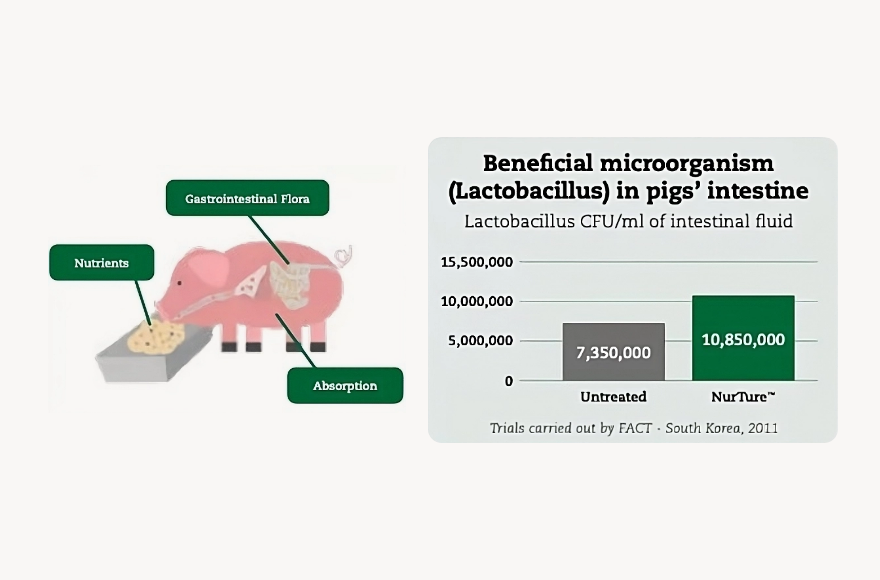
NurTure™ Complementary Mineral Feed

